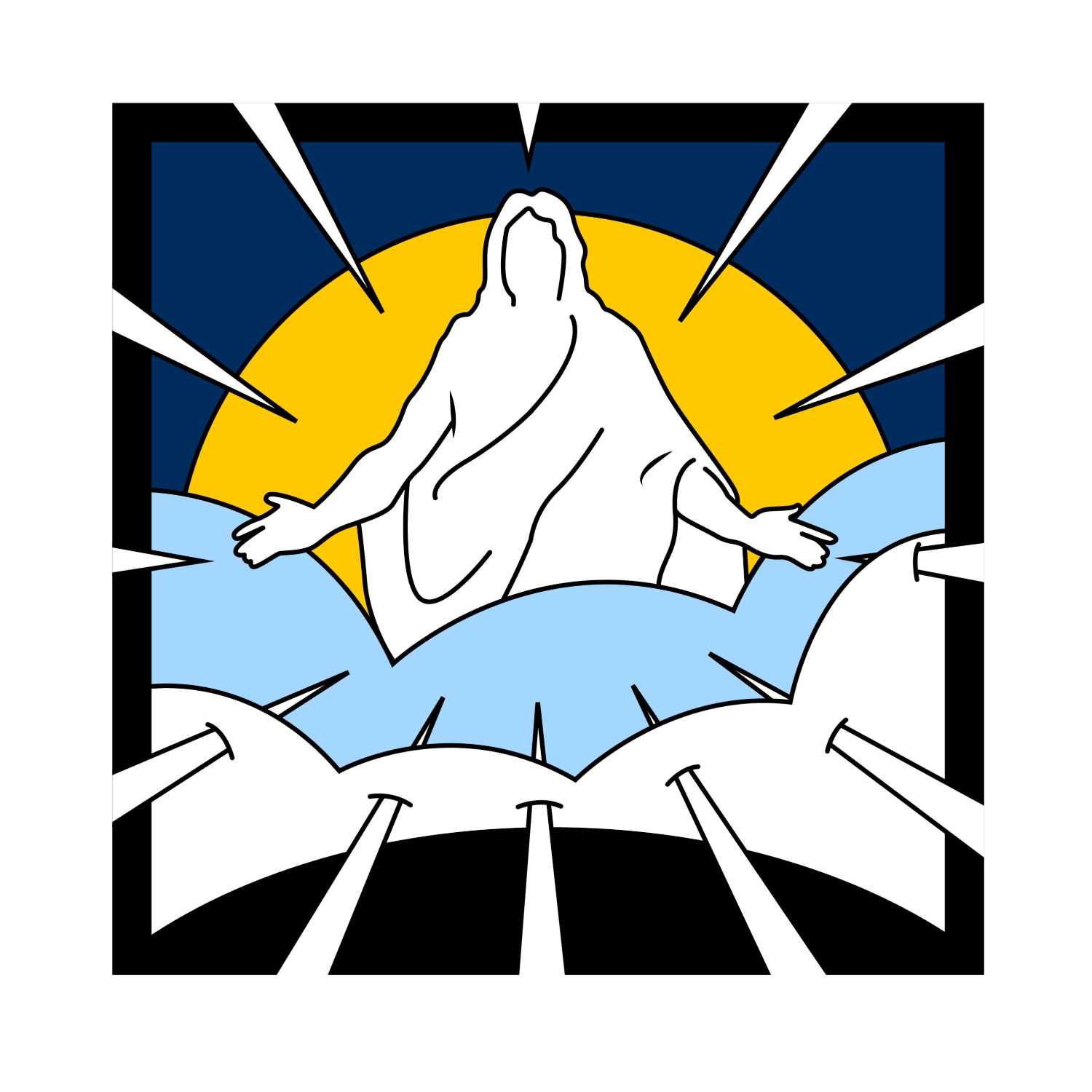
All Episodes - Unveiling Jesus Christ
This podcast is based on the research, writings, and content created by John E. Cassinat found principally in his two-volume book entitled The Book of Revelation Doctrinal Commentary: Unveiling Jesus Christ. The book focuses on the unveiling of Jesus Christ as seen through the eyes of John the Revelator. The podcast sets forth the views and opinions of theologians and Biblical scholars from many different religions, although the doctrinal views of the apocalypse predominantly align with those found in The Church of Jesus Christ of Latter-day Saints. John the Revelator’s symbolism and images are explained with reference to multiple Old Testament books, including Daniel, Ezekiel, Isaiah, Joel and Zechariah. Jesus Christ is the major focus of this podcast from the time of his premortal existence through the time of the celestialization of the earth. Within these broad parameters, podcast topics will include a discussion of the creation of spirit bodies in premortality; the pre
View Podcast Details107 Episodes
![[§139] The Date for the Gathering at Adam-ondi-Ahman thumbnail](https://media.rss.com/unveilingjesuschrist/ep_cover_20250410_010454_af58c9bcdcc640749aa7581eb38b453f.png)
[§139] The Date for the Gathering at Adam-ondi-Ahman
This podcast explains the meaning of the phrase "time and times and the dividing of time" found in Daniel 7:25 to describe the timing of the great gathering of saints at Adam-ondi-Ahman. This prophetic phrase means 3 ½ years, and it means that the gathering of saints will occur 3 ½ years before the Second Coming, which corresponds to the midpoint of Armageddon and the Second Woe. This is the point tin time when the little horn of Satan's latter-day power and dominion will peak and begin to recede from the earth as Christ begins to assert his power on earth.
![[§138] The Little Horn: Satan’s Dominion since 1830 AD thumbnail](https://media.rss.com/unveilingjesuschrist/ep_cover_20250408_010428_80aa1b3cba2d9b50ac6d286779912771.png)
[§138] The Little Horn: Satan’s Dominion since 1830 AD
This podcast explains the symbolism of the one little horn that emerges from the midst of the ten horns on the head of the fourth dreadful beast in Daniel 7:8. The ten horns represent Satan's power in the modern nations of the world and the one little horn represents the re-emergence of Satan's power in the modern nations after the end of the Holy Roman Empire in 1806. The emergence of this little horn coincides in time with the restoration of the Gospel of Jesus Christ in 1830. The little horn of Satan's latter-day power and dominion grows in power as the gospel grows and spreads in th world as the small stone that was cut from the mountain without hands from the dream of Nebuchadnezzar in Daniel 2. The little horn wars against the saints as recorded in Daniel 7:21, and he is personified as a man with eyes like a man and a mouth that speaks blasphemies against God. The personification of the little horn corresponds to the Second Beast described by John the Revelator in Revelation 13, which he also describes as the False Prophet in Revelation 16. The little horn, the Second Beast, and the False Prophet represent the Antichrist of the last days. The disembodied spirit of Judas Iscariot--the ultimate apostate--stands as the spiritual head of the antichristian movement in the last days.
![[§131] Daniel’s Vision of the Future Gathering at Adam-ondi-Ahma thumbnail](https://media.rss.com/unveilingjesuschrist/ep_cover_20250308_040342_ec6957182104083911323feb67ac4656.png)
[§131] Daniel’s Vision of the Future Gathering at Adam-ondi-Ahma
This podcast compares and contrasts the dream of Nebuchadnezzar in Daniel 2, and the vision of Daniel in Daniel 7. The dream and vision both record events covering more than 2500 years from the time of ancient Babylon to the Second Coming of Jesus Christ. The great image in Nebuchadnezzar's dream represents the political kingdoms of the world, including the Babylonian empire (gold head), Persian empire (silver chest), Greek Empire (brass belly), Roman empire (iron legs), and modern nations (clay and iron toes). Daniel's vision describes the growing power of Satan in these same kingdoms as a lion, bear, leopard, and hideous beast with ten horns. Satan's power in the kingdoms of the world continues to grow until the future gathering of saints at Adam-ondi-Ahman.
![[§130] Temple Ordinances Given at Adam-ondi-Ahman thumbnail](https://media.rss.com/unveilingjesuschrist/ep_cover_20250307_090344_4d1e35ca8d7ce995ee172b739f8052a3.png)
[§130] Temple Ordinances Given at Adam-ondi-Ahman
This podcast explores the reasons why the ancient gathering of Adam's righteous posterity at Adam-ondi-Ahman probably included the first temple ordinances performed on earth for the exaltation of all Adam's righteous posterity. The ancient gathering three years before Adam's death foreshadows the future gathering of saints at Adam-ondi-Ahman in Missouri 3 ½ years before the Second Coming.
![[§129] Foundations for Zion Laid at Adam-ondi-Ahman thumbnail](https://media.rss.com/unveilingjesuschrist/ep_cover_20250305_070306_3b8ede4b70559d790417b1d18841c3ea.png)
[§129] Foundations for Zion Laid at Adam-ondi-Ahman
This podcast explains the purpose for the great gathering of Adam's righteous posterity at Adam-ondi-Ahman. This gathering was both a physical gathering and a spiritual gathering that prepared Adam's righteous posterity to enter the presence of the Lord and to receive crowns of exaltation and eternal life. To this end the physical gathering occurred to establish the Patriarchal (Evangelical) Priesthood that was to be handed down by lineage beginning with Seth, who was the second presiding patriarch on the earth after Adam. In addition, the gathering established the Patriarchal Order of the Priesthood, by which worthy men and women can be sealed eternally as husband and wife and thus receive the fullness of the priesthood. In short, Adam's righteous posterity received were promised and also received their exalting ordiances of the templ at Adam-ondi-Ahman.
![[§94] Rev 7:15-17: The Blessed State of the Great Multitude thumbnail](https://media.rss.com/unveilingjesuschrist/ep_cover_20241030_041040_2a45c3e7f29b0c4bfa0eb1307eea4f39.png)
[§94] Rev 7:15-17: The Blessed State of the Great Multitude
This podcast describes the symbolism and meaning of the images seen and heard by John the Revelator in Revelation 7:15-17. In these verses John continues to describe the appearance of the Great Multitude that he saw in paradise. They are surround the throne of God in heaven where they serve and worship God day and night, which means continually. The Father dwells among them. He protects and preserves the exaltation worthy spirits in paradise as a tent or tabernacle covers and preserves those within its protective reach. Revelation 7: 15: 00:01:46Revelation 7:16: 00:14:21Revelation 7:17: 00:19:10
![[§93] Rev 7:13-14: One of the 24 Elders Explains the Great Multitude thumbnail](https://media.rss.com/unveilingjesuschrist/ep_cover_20241029_061014_fc493d109485eac3ac43996a9e694600.png)
[§93] Rev 7:13-14: One of the 24 Elders Explains the Great Multitude
This podcast explains the symbolism found in Revelation 7:13-14, including the meaning of the Great Multitude that John saw in paradise in Revelation 7:9, and the meaning of the Great Tribulation as a description of the last 3½ years before the Second Coming of Christ. The Great Multitude wore robes of white that were made clean and purified by the atoning sacrifice of Christ as the Lamb of God. One of the 24 Elders from John's first vision declared to John the meaning of the Great Multitude in Paradise as the Six Seal comes to a close and the Second Coming approaches.
![[§92] Rev 7:10-12: The Multitude and Angels Worship in Paradise thumbnail](https://media.rss.com/unveilingjesuschrist/ep_cover_20241027_051039_4f2421ba3770de583102bdb0660e43cb.png)
[§92] Rev 7:10-12: The Multitude and Angels Worship in Paradise
This podcast explains and interprets the words of John the Revelator in Revelation 7:10-12. The context for these verses is John's second vision of celestial paradise and he is here describing the great multitude that he was surprised to see in Revelation 7:9. As exaltation-worthy spirits in paradise, they are praising God and the Lamb in the form of a seven-fold doxology that is similar to a seven-fold doxology uttered by the 100+ Millin angels in Revelation 5:11. The connection between the 100+ million angels and the great multitude is explained in this podcast.
![[§91] The Feast of Tabernacles Foreshadows the Sixth Seal Paradise thumbnail](https://media.rss.com/unveilingjesuschrist/ep_cover_20241023_051038_60a00b7de6a9262cdefd5dc8c8576eeb.png)
[§91] The Feast of Tabernacles Foreshadows the Sixth Seal Paradise
This podcast explains the historical roots of John's second vision of paradise in heaven in the Feast of Tabernacles. This feast was one of three great feasts that Israelite men were required to attend at Jerusalem throughout the Mosaic Era. It is also known by its Hebrew Name Sukkot, which means booths or tabernacles. The Feast of Tabernacles was a harvest festival that occurred in the seventh month of the Jewish calendar, and which corresponds to the months of September and October. This was the time of temporal ingathering, and also a time of spiritual ingathering because the feast came five days after the annual Day of Atonement when there was a reconciliation to Jehovah and a renewal of covenants. All these images from the feast are depicted in John's second vision of paradise in Revelation 7:9-17, as explained in this podcast.
![[§90] Rev 7:9: Second Vision of Paradise and the Great Multitude thumbnail](https://media.rss.com/unveilingjesuschrist/ep_cover_20241021_051018_5a49d6ad1f60f341ec03554e5cf26aa4.png)
[§90] Rev 7:9: Second Vision of Paradise and the Great Multitude
This podcast interprets and explains the imagery and symbolism of John's second vision of celestial paradise found in Revelation 7:9. This second vision comes after his first vision of celestial paradise in Revelation 4 and 5. In John's first vision of paradise he saw conditions in "heaven" as they existed at the time of his vision in 96 AD. Thereafter, he saw the sealing of the 144,000 Servants and their work as saviors on Mount Zion primarily during the sixth seal to bring as many as would come to the church of the Firstborn. John's second vision of paradise depicts the successful work of the 144,000, when he sees a great multitude of exaltation-worthy spirits in paradise that no man could number. John's second vision of paradise occurs in time at the end of the sixth seal and start of the seventh seal as the Second Coming approaches. Thus, John sees the great multitude in white robes. They are waving palm branches to herald and welcome Christ as the King of kings, which is an antitypical image for the same scene that played out on Palm Sunday when Christ entered Jerusalem in triumph.
![[§89] The 144,000 Become Saviors on Mount Zion thumbnail](https://media.rss.com/unveilingjesuschrist/ep_cover_20241018_081029_9ae3c7752fa76f6997538f468baeaa14.png)
[§89] The 144,000 Become Saviors on Mount Zion
This podcast explains the role of the 144,000 Servants as saviors on Mount Zion, as seen in John's vision recorded in Revelation 7. As saviors on Mount Zion, the 144,000 Servants have a duty to bring as many as will come to the church of the Firstborn as they work on both sides of the veil of death.
![[§88] The 144,000 Prepare to Rule as Kings and Priests thumbnail](https://media.rss.com/unveilingjesuschrist/ep_cover_20241015_011043_3836ad32bec1dc43314814eac53cf4a8.png)
[§88] The 144,000 Prepare to Rule as Kings and Priests
This podcast explains in detail the identity and meaning (both symbolic and actual) of the 144,000 Servants identified in John's vision in Revelation 7:4-8. Much of this podcast explains Joseph Smith's inspired explanation of them found in Doctrine & Covenants 77:11, as high priests in the patriarchal order of the priesthood, who are ordained or authorized to bring as many people as will come to the status of exaltation in the Church of the Firstborn. They are kings and priests together with their wives as queens and priestesses who will stand with Christ on mount Zion at the time of the Second Coming and then rule and reign with him over the political and ecclesiastical kingdoms of the house of Israel during the millennium and beyond.
![[§87] Limited Sealings of the 144,000 Began in the Fifth Seal thumbnail](https://media.rss.com/unveilingjesuschrist/ep_cover_20241009_061059_18d3a82660af3a401d66d2faa7ba3023.png)
[§87] Limited Sealings of the 144,000 Began in the Fifth Seal
This podcast explains the sealing of the 144,000 servants as described by John in Revelation 7, and how that process began with members of the ancient Church of Jesus Christ in the meridian of time, which corresponds in time with the fifth seal from John apocalyptic vision. Although the sealing of the 144,000 servants is to be accomplished in the sixth seal, the work began in the fifth seal until the onset of the Great Apostasy ended the work in that era, and left most of the sealings to occur during the sixth seal in which we now live.
![[§86] Rev 7:4-8: 144,000 Are Sealed from the Tribes of Israel thumbnail](https://media.rss.com/unveilingjesuschrist/ep_cover_20241007_061000_5f37a3f53780c189cb9c455a6e053cf7.png)
[§86] Rev 7:4-8: 144,000 Are Sealed from the Tribes of Israel
This podcast describes and explains the meaning of the 144,000 Servants identified by John in Revelation 7:4-8. The 144,000 number is a symbolic number derived from the priesthood number of 12 that is squared to arrive at 144 which represents the fulness of the priesthood. The figure of 144 is then multiplied by 1000 as a symbol of superlative greatness. This number is derived from the number 10 cubed. Ten is a symbolic number that represents the whole of a part or part of a whole. When taken together, the symbolic numbers used to arrive at the figure of 144,000 represents all exaltation-worthy Israelites, both those who are part of that chosen bloodline as well as those who are adopted into the house of Israel through the articles of adoption, which are the ordinances of the gospel. The 144,000 Servants are saviors on Mount Zion on both sides of the veil whose duty it is to bring as many others who will come to the Church of the Firstborn to then stand with Christ on Mount Zion at the Second Coming and then rule and reign with Christ during the millennium.
![[§85] Wasting of the Earth Without the Sealing Power thumbnail](https://media.rss.com/unveilingjesuschrist/ep_cover_20241001_041054_af0915798ed5b7a510f03eda7aba04fd.png)
[§85] Wasting of the Earth Without the Sealing Power
This podcast describes in detail the prophecy in Malachi 4:5-6, where he predicted that the earth would be utterly wasted if Elijah the prophet failed to appear before the great and dreadful day of the Lord. This prophecy was fulfilled, not during Elijah's visit on the mount of transfiguration in the meridian of time, but on April 3, 1836, when Elijah appeared at the Kirtland Temple to bestow the sealing power on Joseph Smith and Oliver Cowdery. Since that time, the exalting ordinances of the gospel have been performed in increasing numbers as a preparation for the Second Coming of Jesus Christ. The keys of the sealing power on both sides of the veil that all things may be gathered together in one with Christ in heaven and on earth.
![[§84] Bridging the “Great Gulf” Between Prison and Paradise thumbnail](https://media.rss.com/unveilingjesuschrist/ep_cover_20240928_050908_f723277eee3a50ba33ca4f57b528d288.png)
[§84] Bridging the “Great Gulf” Between Prison and Paradise
This podcast focuses on the postmortal ministry of Jesus Christ in the spirit world between his death and resurrection. The disembodied spirit of Christ entered celestial paradise and declared liberty to the captives in anticipation of their forthcoming resurrection. He also bridged the great gulf between paradise and prison as he called ministers to serve as a great missionary force in spirit prison. The gospel was thus taken for the first time into prison that the captive spirits could receive the gospel to be judged according to men in the flesh (i.e., according to the same standards), but live according to God in the spirit. That is, by their conversion to the gospel and the receipt of vicarious ordinances, the disembodied spirits in prison can cross the great gulf bridged by the ministry of Christ and overcome spiritual death.
![[§83] The Status of Spirits in Spirit Prison [Hell] thumbnail](https://media.rss.com/unveilingjesuschrist/ep_cover_20240915_080915_7cfe8c19d517109fd17533f337995944.png)
[§83] The Status of Spirits in Spirit Prison [Hell]
This podcast explains the status of disembodied spirits in prison (hell) in the postmortal spirit world and the conditions in prison. The spirits include heirs of the celestial kingdom who have not yet received the gospel and/or they are waiting the performance of their vicarious ordinances by someone still living on the earth. If these conditions and others are satisfied, celestial-worthy spirits can cross the gulf between prison and paradise that was bridged by the Savior during his postmortal ministry in paradise. Spirits in prison also include persons of the terrestrial and telestial kingdoms, as well as sons of perdition. The conditions in prison vary depending on the spiritual condition of the spirits who enter. Because of the diversity of spirits that exist, there are also diverse amounts of spiritual light present in prison. The gospel is taught in prison, and disembodied spirits retain their agency to accept the gospel, including the vicarious ordinances that can be performed on their behalf.
![[§82] The Status of Spirits in Paradise thumbnail](https://media.rss.com/unveilingjesuschrist/ep_cover_20240912_090939_7fc4382ecaa0217fc23807540d32f88f.png)
[§82] The Status of Spirits in Paradise
This podcast explains the conditions in celestial paradise for the disembodied spirits of the dead who qualified in this life to enter paradise at the time of their death. Baptism is the gateway ordinance into the celestial kingdom and to enter paradise between death and resurrection. There are three classes of spirits in celestial paradise, just as there are three classes within the celestial kingdom. This podcast endeavors to explain (or give possible explanations) to distinguish on degree of glory from another, including the difference of being born in the covenant or being sealed to a parent by the ordinance of adoption. The spirits of the dead can also qualify to enter paradise after they receive the gospel in spirit prison and have the vicarious ordinances of baptism and confirmation performed for them by a mortal person. The resurrection of the dead will begin with the disembodied spirits in paradise worthy of exaltation. The spirits that do not qualify for exaltation will be resurrected after the exaltation-worthy persons.
![[§81] The Status of Spirits Awaiting the Resurrection thumbnail](https://media.rss.com/unveilingjesuschrist/ep_cover_20240917_090923_6a81f122d858e03cc483bdfcdadb75f6.png)
[§81] The Status of Spirits Awaiting the Resurrection
This podcast explains the nature, condition, and status of disembodied spirits in the postmortal spirit world. A distinction is made between unembodied spirits in the premortal spirit world, embodied spirits in mortality, disembodied spirits that exist between death and resurrection, and reembodied spirits—better known as resurrected people. The postmortal spirit world consists of two great divisions called paradise and prison, but there are gradations of light in paradise and gradations of darkness, wickedness, and evil in prison. DIsembodied spirits in paradise are the spirits of the just who will ultimately qualify for the celestial kingdom, while those in prison are of the terrestrial and telestial kingdoms of glory. Prison is also home to the disembodied spirit sons of perdition who experience outer darkness while in prison temporarily and then ultimately throughout all eternity because they cannot be redeemed.
![[§80] The Laws of Earthly Ordinances and Resurrection thumbnail](https://media.rss.com/unveilingjesuschrist/ep_cover_20240912_030906_2601cddb66aff4e090b5b481f2bff52c.png)
[§80] The Laws of Earthly Ordinances and Resurrection
This podcast explains the doctrine or law of earthly ordinances, which requires that all gospel ordinances--beginning with baptism and ending with the sealing ordinance—must be received by people before they can enter the celestial kingdom. The only exception would be for small children before the age of eight and unaccountable persons who are not able to exercise their agency for any reason. Even these people, however, must be sealed as an earthly ordinance to be exalted. This podcast also explains the connection between the law of earthly ordinances and the resurrection, including the Order of Resurrection. Combined, these laws require that all people of the celestial kingdom receive their required ordinances before they are resurrected, which is when their status will be fixed as a form of final judgment. This podcast explains how these principles, laws, and doctrines make temple work an urgent priority in these last days of the sixth seal so that all exaltation-worthy people can receive their ordinances while living--or vicariously if dead--to be prepared to stand with Christ in the flesh on mount Zion at the Second Coming as described by John in Revelation 14:1.
![[§79] The Urgency of Temple Work in the Sixth Seal thumbnail](https://media.rss.com/unveilingjesuschrist/ep_cover_20240911_080943_e837e4784d1071609ffdfa8f87aec473.png)
[§79] The Urgency of Temple Work in the Sixth Seal
This podcast describes the importance and urgency of temple work during these last days that come at the end of the sixth seal described by John in Revelation 7. Temple work includes the need to engage in family history and genealogy. Latter-day prophets describe temple work as the most important work we can perform in preparation for the Second Coming of Jesus Christ. We are told that our ancestors cannot be perfected without us, nor can we be perfected without them. This podcast also explains the meaning of the prophecy by Malachi that Elijah must come before the great and dreadful day of the Lord to restore the sealing power or the earth would be utterly wasted at Christ’s second coming. This podcast also gives a brief history of temple work in this dispensation that began with baptisms for the dead in the Mississippi river. As we perform this work we become saviors on mount Zion.
![[§78] Elijah Restores the “Sealing Power” in the Sixth Seal thumbnail](https://media.rss.com/unveilingjesuschrist/ep_cover_20240910_050903_37c8df6347d63f8c3aeecb731d5494fd.png)
[§78] Elijah Restores the “Sealing Power” in the Sixth Seal
This podcast explains the sealing power and the role of Elijah as one who held the keys of the sealing power anciently. As the last prophet to hold the sealing power anciently, Elijah was translated so that he could then appear to Jesus Christ and to Peter, James and John on the mount of Transfiguration and bestow upon them the keys of the sealing power, which are the keys of the kingdom. Elijah also appeared to Joseph Smith and Oliver Cowdery in the Kirtland Temple on April 3, 1836 to restore the sealing power in this last dispensation. This podcast distinguishes the persons of Elias, who restored the keys of the Abrahamic Covenant and Elijah, who restored the sealing power. By this power, whatever the lawful administers of God bind on earth will be bound in heaven and whatsoever the loose on earth shall be loosed in heaven. This podcast also discusses how the spirit of Elijah accompanies the bestowal of the keys of the sealing power and causes the hearts of the children to turn to their fathers as they do family history and perform vicarious ordinances in the temple for their ancestors.
![[§77] Rev 7:2-3: The Angel from the East Says “Hurt Not the Earth” thumbnail](https://media.rss.com/unveilingjesuschrist/ep_cover_20240830_020814_bec1a4c72f510336c1ca3ca6eb6ba3ee.png)
[§77] Rev 7:2-3: The Angel from the East Says “Hurt Not the Earth”
This podcast discusses the meaning and symbolism of Revelation 7:2-3, where John describes his vision of the angel Elias, who ascends from the east and directs the four angels not to hurt the earth, the sea or the trees until the 144,000 servants of God have been sealed in their forehead. This podcast brings together the concepts, principles and doctrines discussed in several earlier podcasts, including a more detailed discussion about the identities of the 144,000 servants that are sealed in their foreheads with the seal of the living God.
![Rev 7 [§76] The Calling and Election of the Dead thumbnail](https://media.rss.com/unveilingjesuschrist/ep_cover_20240829_100810_b39e79a883dbfd8072ee78a8a25c90ad.png)
Rev 7 [§76] The Calling and Election of the Dead
This podcast explains what it means for a person to have his or her calling and election made sure at the time of their death or otherwise qualify for exaltation and eternal life sometime after their death. Every person who receives the seal of the living God mentioned by John in Revelation 7:2-4 must have their calling and election made sure either in this life or hereafter. To qualify for this blessing at death or thereafter, people must prove themselves worthy as described in this podcast. Once their calling and election is made sure, they receive an unqualified and unconditional promise of eternal life and exaltation. People that do not have the opportunity to hear and accept the gospel in this life can accept it in the postmortal spirit world. If they then receive the sealing ordinance vicariously and enter celestial paradise, their calling and election is said to be made sure at that time. They become numbered among the spirits of just men made perfect as they ender paradise to await their resurrection.
![Rev 7 [§75] The Calling and Election of Those Living thumbnail](https://media.rss.com/unveilingjesuschrist/ep_cover_20240824_050858_f1a1bc2fc233f18ff8bd62d3fce79463.png)
Rev 7 [§75] The Calling and Election of Those Living
This podcast explains what it means for a person to have his or her calling and election made sure in this life. This is also called the “more sure word of prophecy,” the “second comforter,” and being sealed by the “Holy Spirit of Promise.” Every person who receives the seal of the living God mentioned by John in Revelation 7:2-4 must have their calling and election made sure either in this life or hereafter. To qualify for this blessing, people must prove themselves worthy as described in this podcast. Once their calling and election is made sure, they receive an unqualified and unconditional promise of eternal life and exaltation that can only be broken if a person then commits adultery or murder and fails to repent. The seal and promise will also be revoked if a person commits the unpardonable sin and becomes a son of perdition.
![Rev 7 [§74] The Calling and Election of Saints Made Sure thumbnail](https://media.rss.com/unveilingjesuschrist/ep_cover_20240822_090825_16e1fa7a06f68eeec2bcb4a49970e786.png)
Rev 7 [§74] The Calling and Election of Saints Made Sure
This podcast explains what it means to have your calling and election made sure as one of two parts of the seal of the living God mentioned by John in Revelation 7:1-8. Those that possess the seal are guaranteed eternal life, exaltation, and godhood. To have your calling and election made sure means that you receive the more sure word of prophecy or the Second Comforter. The seal comes as the Holy Ghost, acting in his function as the Holy Spirit of Promise places a ratifying seal that guarantees eternal life. Those that possess the seal of the living God have a guarantee of spiritual protection as the power and influence of Satan grows stronger as we approach the end of the sixth seal and the Second Coming during the seventh seal.
![Rev 7 [§73] The Ancient History of the Sealing Ordinance thumbnail](https://media.rss.com/unveilingjesuschrist/ep_cover_20240822_050844_cd9917995aed61da4c018c3242ff5aff.png)
Rev 7 [§73] The Ancient History of the Sealing Ordinance
This podcast describes the history of the sealing ordinance going all the way back to Adam and the era of the Patriarchs. Moving forward in time, the podcast explains the sealing ordinance after the flood, during the Mosaic Dispensation, during the time of Christ, the modern era and after the Second Coming. In addition to the history of the ordinance, this podcast explains the purpose of the sealing ordinance and its relationship to the seal of the living God mentioned by John in Revelation 7:1-8. The sealing ordinance has been and must be performed in a temple, beginning with the eternal marriage of Adam and Eve in the garden of Eden. This podcast also explains the requirement for all people to be sealed (married) in the temple as a condition for entry into the highest degree of glory in the celestial kingdom called exaltation and eternal life. Christ himself undoubtedly complied with this sacred ordinance and was married during his mortal life to fulfill all righteousness.
![Rev 7:2-3 [§72] The Two Parts of the “Seal of the Living God” thumbnail](https://media.rss.com/unveilingjesuschrist/ep_cover_20240820_080858_58237e3fd6a82fc44286ecb353a881ed.png)
Rev 7:2-3 [§72] The Two Parts of the “Seal of the Living God”
This podcast explains the seal of the living God identified by John in Revelation 7:2-3. This includes a description of how seals were used anciently. The seal is a symbol of ownership, and those that have the seal belong to God. The seal is not an actual mark on the body, but it is something that must literally occur in the lives of worthy people who then belong to God. The seal includes the sealing ordinance that can be received in the temples of the Church of Jesus Christ of Latter-day Saints. The second part of the seal is to have one’s calling and election made sure, which is a guarantee of eternal life and exaltation. Those that have the seal and this guarantee are spiritually protected against Satan and will one day live as God lives and to be like him.
![Rev 7:2-3 [§71] The Two Parts of the “Seal of the Living God” thumbnail](https://media.rss.com/unveilingjesuschrist/ep_cover_20240815_040855_408f30d673a0c2f883278539abba61bf.png)
Rev 7:2-3 [§71] The Two Parts of the “Seal of the Living God”
This podcast explains the sealing ordinance performed in latter-day saint temples today, which includes the promises associated with the Abrahamic Covenant, which is also called “the New and Everlasting Covenant of Marriage.” A distinction is drawn between this covenant of celestial or eternal marriage and the new and everlasting covenant that is another name for the gospel of Jesus Christ. This podcast also discusses what is required for people to enter the highest degree of celestial kingdom, which includes exaltation, eternal life, and the continuation of seeds. Exaltation is limited to husbands and wives who enter the Patriarchal Order of the Priesthood, which is the fulness of the priesthood. Children are also sealed up to exaltation when they are born in the covenant or adopted through the sealing ordinance that binds them to their parents. The distinction is explained between people in the celestial kingdom who are exalted to become as God is, and others in the celestial kingdom that are ministering angels in the celestial kingdom. People cannot be exalted without receiving the sealing ordinance. There are no exceptions, even though the ordinances of baptism, confirmation and others are not required for those who are unaccountable in this life due to their age and mental and/or physical disabilities that limit their agency.
![Rev 7:2 [§70] An Angel from the East [Elias] Has the Seal of God thumbnail](https://media.rss.com/unveilingjesuschrist/ep_cover_20240812_090851_7ce81191dcab2763ac96998356e515d3.png)
Rev 7:2 [§70] An Angel from the East [Elias] Has the Seal of God
This podcast explains the identity of the angel from the east that John saw in Revelation 7:2. The name of this angel is Elias. Elias is both a name and a title. In the context of Revelation 7:2, Elias is a composite angel who represents the multiple angels involved in, and having authority over, the sealing of the 144,000 servants during the sixth seal as mentioned by John in Revelation 7:4-8.
![Rev 7:1 [§69] The Four Destroying Angels of the Sixth Seal thumbnail](https://media.rss.com/unveilingjesuschrist/ep_cover_20240808_030814_e40ad73cfa3f8ae576b867a2f429b7f5.png)
Rev 7:1 [§69] The Four Destroying Angels of the Sixth Seal
This podcast explains the symbolism of the four angels in Revelation 7:1 as destroying angels who have the power to hold at bay the four winds of destruction until the 144,000 servants of God are sealed in their forehead as described in Revelation 7:4-8. These are also restoration angels with the power to save those that accept and live the gospel and the corresponding power to destroy those that do not accept the gospel to their own condemnation. These destroying angels are at work in the world today, but they will not allow the fury of the four winds to blow destructively over the earth until the work of sealing has been accomplished during this, the sixth seal.
![Rev 7 [§68] Preaching the Gospel in All Nations thumbnail](https://media.rss.com/unveilingjesuschrist/ep_cover_20240803_080850_d7a9eba4790575963a32a80b9faa39be.png)
Rev 7 [§68] Preaching the Gospel in All Nations
This podcast discusses the commitment of priesthood keys on the earth as a necessary part of the restoration of the gospel. From the commitment of the keys to men on the earth, the gospel has been rolling forth to the ends of the earth, which then facilitates the sealings that must occur during the sixth seal as envisioned by John in Revelation 7. This podcast discusses the distinction of the restoration of the priesthood in 1829 from the commitment of priesthood keys, including the final keys that were committed when Christ appeared at the Kirtland Temple in the company of Moses, Elias and Elijah.
![Rev 7 [§67] The Four Angels Commit the Keys of the Kingdom thumbnail](https://media.rss.com/unveilingjesuschrist/ep_cover_20240730_080741_2761a83870b0913c57f641730c7658db.png)
Rev 7 [§67] The Four Angels Commit the Keys of the Kingdom
This podcast discusses the commitment of priesthood keys on the earth as a necessary part of the restoration of the gospel. From the commitment of the keys to men on the earth, the gospel has been rolling forth to the ends of the earth, which then facilitates the sealings that must occur during the sixth seal as envisioned by John in Revelation 7. This podcast discusses the distinction of the restoration of the priesthood in 1829 from the commitment of priesthood keys, including the final keys that were committed when Christ appeared at the Kirtland Temple in the company of Moses, Elias and Elijah.
![Rev 7:1 [§66] The Four Angels of the Restoration thumbnail](https://media.rss.com/unveilingjesuschrist/ep_cover_20240729_080712_e64b1b7baff423eb4692d78630e33836.png)
Rev 7:1 [§66] The Four Angels of the Restoration
This podcast explains the meaning and role of the four angels in Revelation 7:1, who stand on the four corners of the earth. They symbolically represent the four restoration angels of the gospel who have saving power to take the gospel to all nations, kindreds, tongues, and people. They are also destroying angels that hold at bay the four winds of destruction. This reflects the power of the gospel to save those who accept and live its principles and power to destroy those that do not. The four angels on the four corners of the earth hold at bay the four winds of destruction until the work of the sixth seal is complete, which includes taking to gospel to all the world and sealing the 144,000 Servants as described in Revelation 7.
![Rev 6:17 [§65] Who Shall Be Able to Stand? thumbnail](https://media.rss.com/unveilingjesuschrist/ep_cover_20240728_020739_3395622ef1a269913622419c15ac44ac.png)
Rev 6:17 [§65] Who Shall Be Able to Stand?
This podcast explains the meaning of Revelation 6:17, which asks he question: “Who shall be able to stand?” This question has reference to the great day of wrath that will come at the second coming and asks who shall be able to stand on mount Zion with Jesus Christ at the day of the Second Coming. It correspondingly asks, who shall be able to stand against the destruction of the great wrath that will accompany the day of the Second Coming. John’s vision in Revelation 7 answers these questions.
![Rev 6:15-16 [§64] Seven Wicked Classes of Men Hide in Fear thumbnail](https://media.rss.com/unveilingjesuschrist/ep_cover_20240722_090702_35a4058988ee5f913e366f31ae836324.png)
Rev 6:15-16 [§64] Seven Wicked Classes of Men Hide in Fear
This podcast explains the meaning and symbolism of the seven classes of wicked men in Revelation 6:15-16, who will face the wrath of the Lamb if they fail to repent when the sixth seal comes to a close at the time of the great earthquake that still lies in our future. Revelation 6:15: 00:01:37 Revelation 6:16: 00:28:28
![Rev 6:14 [§63] Heaven Departs [Opens] as a Scroll thumbnail](https://media.rss.com/unveilingjesuschrist/ep_cover_20240720_040752_db9b74f27350ccce1b58afc6d2c2bf9f.png)
Rev 6:14 [§63] Heaven Departs [Opens] as a Scroll
This podcast explains the symbolism used by John to describe literal signs and wonders that will be seen in the visible sky at the end of the sixth seal as recorded in Revelation 6:14. John uses the symbol of a scroll that is rolled together to describe how heaven will depart. Heaven or that part of the sky that we see normally will depart when great signs and wonders in heaven become visible as the sixth seal comes to an end.
![Rev 6:12-13 [§62] Signs in the Sun, Moon and Stars thumbnail](https://media.rss.com/unveilingjesuschrist/ep_cover_20240712_070754_0597a64a368fb5c52cfa1e703af45ae2.png)
Rev 6:12-13 [§62] Signs in the Sun, Moon and Stars
This podcast describes the cosmic signs of the times in heaven that will accompany the Great Earthquake at the end of the sixth seal as described by John in Revelation 6:12-13. These signs include a dark sun, a moon that is red like the color of blood, and stars that fall like unripe figs when blown by a mighty wind. These are literal signs in heaven that have historical precedents as explained in this podcast.
![Rev 6:12, 14 [§61] A Great Earthquake Ends the Sixth Seal thumbnail](https://media.rss.com/unveilingjesuschrist/ep_cover_20240712_030745_22e2f253733f122fcf21f600c44e0534.png)
Rev 6:12, 14 [§61] A Great Earthquake Ends the Sixth Seal
This podcast discusses and explains the “Great Earthquake” that will occur in our future at the end of the sixth seal, as predicted by John in Revelation 6 verses 12 and 14. The podcast describes the power of this earthquake in relationship to other earthquakes from the past and in the future, including the two separate earthquakes described by John in Revelation 11 and Revelation 16. This podcast also explains how this Great Earthquake, along with other signs of the times from the sixth seal, are intended to encourage people to repent as we prepare to transition from the sixth seal to the seventh seal.
![Rev 6 [§59] The Seven “Signs of the Times” of the Sixth Seal thumbnail](https://media.rss.com/unveilingjesuschrist/ep_cover_20240709_120723_6fda15244756ec394835696104a2fb79.png)
Rev 6 [§59] The Seven “Signs of the Times” of the Sixth Seal
This podcast provides an overview of the latter-day signs of the times that are part of the sixth seal in which we now live. The “Signs of the Times” are events and divinely controlled occurrences, including “natural disasters,” that portend future events associated with the Second Coming of Jesus Christ. This podcast explains how the Signs of the Times are becoming increasingly apparent to spiritually sensitive people who can recognize the signs for what they are. Even for spiritually discerning people the Signs of the Times can be difficult to recognize and interpret for reasons that are explained in this podcast. The Signs are also discussed in the context of the great wickedness that exists in the world today, including the United States, which is threatened by the increasing evil tolerated in this country. The signs of the times given in the sixth seal are intended to persuade wicked and evil to repent and the signs are sufficiently clear that the unrepentant shall be left without excuse the day of the Lord’s wrath that will follow the sixth seal.
![Rev 6 [§59] The Seven “Signs of the Times” of the Sixth Seal thumbnail](https://media.rss.com/unveilingjesuschrist/ep_cover_20240702_110703_177c7ba5e840259ed09b2f8c9e27985b.png)
Rev 6 [§59] The Seven “Signs of the Times” of the Sixth Seal
This podcast provides an overview of the latter-day signs of the times that are part of the sixth seal in which we now live. The “Signs of the Times” are events and divinely controlled occurrences, including “natural disasters,” that portend future events associated with the Second Coming of Jesus Christ. This podcast explains how the Signs of the Times are becoming increasingly apparent to spiritually sensitive people who can recognize the signs for what they are. Even for spiritually discerning people the Signs of the Times can be difficult to recognize and interpret for reasons that are explained in this podcast. The Signs are also discussed in the context of the great wickedness that exists in the world today, including the United States, which is threatened by the increasing evil tolerated in this country. The signs of the times given in the sixth seal are intended to persuade wicked and evil to repent and the signs are sufficiently clear that the unrepentant shall be left without excuse the day of the Lord’s wrath that will follow the sixth seal.
![Rev 6 [§58] Overview of John’s Vision of the Sixth Thousand Years thumbnail](https://media.rss.com/unveilingjesuschrist/ep_cover_20240701_080718_79d4c84b573f2c4a1857f9b79792f65b.png)
Rev 6 [§58] Overview of John’s Vision of the Sixth Thousand Years
This podcast provides an overview of the sixth seal described by John in Revelation 6:12 through Revelation 7:17. The sixth seal covers the thousand-year period from approximately 1000 – 2000 AD. When the Great Earthquake and other signs in the heaven occur as predicted by John in Revelation 12-16, this will mark the end of the sixth seal. The end of this seal will be delayed, however, so that the 144,000 Servants can received the seal of the living God so that they may stand with Christ on mount Zion as described in Revelation 14:1.
![Rev 6:11 [§57] The “Great Apostasy” During the Fifth Seal thumbnail](https://media.rss.com/unveilingjesuschrist/ep_cover_20240628_030619_80d03ac0de5c7ca75fc98377284a8224.png)
Rev 6:11 [§57] The “Great Apostasy” During the Fifth Seal
This podcast describes the context and meaning of the martyrdom mentioned by John in Revelation 6:11 as part of the fifth seal. John describes the martyrdom of two groups, including those of the ancient church of Jesus Christ, who were killed during the apostolic era and the time period known as the Great Apostasy. He states that these early martyrs will be at rest in the celestial paradise of the post-mortal spirit world until their fellow-servants, those of the latter-days, are likewise martyred. Martyrdom extends beyond the fifth seal and will continue during the sixth and seventh seals right up to the time of the Second Coming of Jesus Christ. These topics are the subject of this podcast.
![Rev 6:9-10 [§56] Martyrdom During the Fifth Seal thumbnail](https://media.rss.com/unveilingjesuschrist/ep_cover_20240620_060631_e36118bcc56caaed88eb3c150a701505.png)
Rev 6:9-10 [§56] Martyrdom During the Fifth Seal
This podcast describes the fifth seal in the Book of Revelation described by John in Revelation 6:9-10. As explained in this video, the fifth seal is called the millennium of martyrdom that began with the birth of Jesus Christ and ended in 1000 AD. The most transcendent event in this period was the atonement of Jesus Christ, but John’s focus was on the martyrdom of saints that began after Christ was crucified. The message of martyrdom is symbolized by John’s vision of an altar in heaven and the souls of the martyrs beneath that altar. This imagery is explained in this podcast. Finally, this podcast also talks about the Great Apostasy when the true church of Jesus Christ was universally lost throughout the world during the period of the fifth seal and continuing for much of the sixth seal. Revelation 6:9: 00:03:48 Revelation 6:10: 00:51:25
Rev 6:7-8 [§55] Sickness and Death in the Fourth Seal [1000 BC-1 AD]
This podcast explains the symbolism and meaning of the fourth seal in Revelation 6:7-8. The fourth seal covers the period from 1000 BC to the birth of Jesus Christ in about 1 AD. This was the time of the pale horse of the apocalypse, which represents the spiritually sick condition of the Israelites during this 1000-year period. Revelation 6:7: 00:01:10 Revelation 6:8: 00:16:53
![Rev 6:5-6 [§54] Famines in the Third Seal [2000-1000 BC] thumbnail](https://media.rss.com/unveilingjesuschrist/ep_cover_20240614_030601_73f6c61b9e906307f496226a7ab920dd.png)
Rev 6:5-6 [§54] Famines in the Third Seal [2000-1000 BC]
This podcast explains the symbolic images used by John in his vision of the third seal of seven opened in Revelation 6:5-6. In these verses, he sees a black horse and rider, as well as other symbols that represent famines in the third thousand years of the earth’s temporal existence. This coincides in time with the period of the patriarchs, including Abraham, Isaac, Jacob (Israel) and Joseph. There were also famines in the days of the judges in Israel and the three kings of Israel, including Saul, David and Solomon. This great time of famine occurred between approximately 2000 and 1000 BC.Revelation 6:5: 00:01:51Revelation 6:6: 00:20:09
![Rev 6:3-4 [§53] Noah’s Flood in the Second Seal [3000-2000 BC] thumbnail](https://media.rss.com/unveilingjesuschrist/ep_cover_20240614_120649_efcb81e8306a24854f7c636812302556.png)
Rev 6:3-4 [§53] Noah’s Flood in the Second Seal [3000-2000 BC]
This podcast explains the symbolic images used by John in his vision of the second seal of seven opened in Revelation 6:3-4. In these verses he sees a red horse and rider, which represent bloodshed and death in the second thousand years of the earth’s temporal existence. This coincides in time with the period of the great flood in the days of Noah between 3000 and 2000 BC. This podcast also explains the mechanism of the flood by first talking about the creation. The earth was organized through accretion which resulted in a hot molten earth. As the earth cooled rapidly, hot magma began to crystalize to form oceanic crust and continental crust. In the earth’s cooling process, water was expelled to form a shallow ocean on the surface of the crust. Continued cooling beneath the earth’s crust caused additional water to be expelled which formed a subterranean ocean. At the time of the flood, a rupture in the crust allowed the subterranean waters to be expelled to the surface very rapidly. This is described in Genesis 7:11 as the “fountains of the great deep.” The effects of this rupture in the crust are discussed in this podcast. Revelation 6:3: 00:05:26 Revelation 6:4: 00:15:19
[§52] Rev 6:1-2: Enoch’s Conquests in the First Seal [4000-3000 BC]
This podcast explains in detail the meaning of the First Seal identified in Revelation 6:1-2. This seal covers the period of time from approximately 4000 to 3000 BC. This is the first of four historical seals described by the image of a white horse and a rider with a crown and bow who conquers his enemies. The imagery represents the triumphal conquest (both temporally and spiritually) of the prophet Enoch. After a ministry of 365 years, Enoch and his city were translated and taken into heaven. Revelation 6:1: 00:02:17 Revelation 6:2: 00:15:41
![Rev 6 [§51] Overview of the Seven Seals thumbnail](https://media.rss.com/unveilingjesuschrist/ep_cover_20240530_030535_e5105267109f54c80dc87357503435fb.png)
Rev 6 [§51] Overview of the Seven Seals
This podcast summarizes and gives an overview of the seven seals described in the Book of Revelation. The seven seals represent the redemptive works of Jesus Christ during the earth’s seven thousand year temporal existence. They are first identified in Revelation 5 and the opening of the seals begins in Revelation six. The first four historical seals are described briefly in Revelation 6 and cover the period from 4000 BC to the birth of Christ. The symbolism of three prophetic seals cover the period from 1 AD to the end of the earth after the millennium and they are also described and summarized in this podcast.
![[§50] Rev 5:11-14: Those in All Kingdoms of Glory Praise the Lamb thumbnail](https://media.rss.com/unveilingjesuschrist/ep_cover_20240528_090501_7a31693cde9d7ef2e3c4f85e1f5e79d4.png)
[§50] Rev 5:11-14: Those in All Kingdoms of Glory Praise the Lamb
This podcast explains the symbolism from John’s vision of celestial paradise and beyond in Revelation 5:11-14. In these verses, John beheld the voices of 100 million angels, plus thousands and thousands more who praised Christ for his atonement and the work of his redemption. These 100+ million angels were outside the inner circles of worshipers that included the 24 Elders (exaltation-worthy spirits) and the Four Beasts (representing four classes of creation). The 100+ million angels exist in spirit prison of the postmortal spirit world as of the time of John’s vision of heaven in 96 AD, from all reaches of the universe including all worlds created and redeemed by Christ. These angels proclaim a seven-fold doxology in their praise of Jesus Christ. The Four Beast say “Amen” as an expression of agreement and ratification of worship by the 24 Elders and the 100+ million angels. Revelation 5:11: 00:02:02 Revelation 5:12: 00:37:22 Revelation 5:13: 00:45:41 Revelation 5:14: 00:56:33
![[§49] Rev 5:8-10: Saints Worthy of Exaltation Praise the Lamb thumbnail](https://media.rss.com/unveilingjesuschrist/ep_cover_20240528_040501_6f0483aad777489f1a2d62f2e3742b8c.png)
[§49] Rev 5:8-10: Saints Worthy of Exaltation Praise the Lamb
This podcast explains the symbols in John’s vision from Revelation 5:8-10. In these verses, John takes the book with seven seals from the hand of God the Father. When he does so, the Four Beasts and 24 Elders immediately prostrate themselves before Christ and worship him as the redeemer. The 24 Elders four and twenty elders also have harps, and golden vials full of odours, which are the prayers of saints. The 24 Elders also sing a new song extolling the virtues of his sacrifice to redeem all of creation from every kindred, and tongue, and people, and nation. They once again proclaim how Christ has made them kings and priests that will rule on earth commencing with the millennium.Revelation 5:8: 00:01:46Revelation 5:9: 00:31:23Revelation 5:10: 00:55:20
![[§48] Rev 5:5-7: The Lamb Prevailed to Open the Book and Loose the Seals thumbnail](https://media.rss.com/unveilingjesuschrist/ep_cover_20240525_100515_64fdede9782254db0f88484f67ca40c7.png)
[§48] Rev 5:5-7: The Lamb Prevailed to Open the Book and Loose the Seals
This podcast explains the meaning of the symbols used by John the Revelator from his vision in Revelation 5:5-7. These verses are a continuation of John’s vision of paradise in the postmortal spirit world that began in Revelation 4. In Revelation 5:1-5, John saw a book with seven seals and he wept because he could not find any man to break the seals and open the book. John is now told that the “Lion of the tribe of Juda, the Root of David” (Jesus Christ) had power to do so. He then saw a Lamb that stood in the midst of paradise as though he was slain, but was very much alive. The Lamb represents Jesus Christ. He had seven horns and eyes, representing his omniscience and omnipotent. Christ takes the book from the right hand of God the Father and prepares to open the book. Revelation 5:5: 00:02:20 Revelation 5:6: 00:20:56 Revelation 5:7: 00:49:49
![[§47] Rev 5:1-4: The Book with Seven Seals thumbnail](https://media.rss.com/unveilingjesuschrist/ep_cover_20240522_080511_9665254c0e4630e9746bcec669d7f5db.png)
[§47] Rev 5:1-4: The Book with Seven Seals
This podcast explains the meaning and imagery of John the Revelator in Revelation 5:1-4. In these verses, John’s vision of celestial paradise continues from Revelation 4, but now he sees God the Father on the throne with a book (scroll) in his right hand having seven seals. The meaning of the scroll and its seven seals is discussed in detail as well as the meaning of the strong angel who asks the question of who is worthy to open the book and loose the seals. No man was worthy to do so, because only a God (Jesus Christ) had that power. Revelation 5:1: 00:02:25 Revelation 5:2: 00:50:54 Revelation 5:3: 00:59:56 Revelation 5:4: 01:02:47
![[§46] Rev 4:11: God the Father Glorified As the Creator of all Things thumbnail](https://media.rss.com/unveilingjesuschrist/ep_cover_20240518_060527_eaa2b988f926c84bd8cc687c081bd61a.png)
[§46] Rev 4:11: God the Father Glorified As the Creator of all Things
This podcast explains the symbolism and meaning of John the Revelator’s vision found in Revelation 4:11. This last verse in Revelation chapter 4 explains why the Four Beasts and 24 Elders in this chapter are worshiping God the Father as the ultimate source of all creations in the universe.
![[§45] Rev 4:8-10: The Beasts and 24 Elders Worship the Creator thumbnail](https://media.rss.com/unveilingjesuschrist/ep_cover_20240517_020554_ad4728ccd958feaa56ab7c87cd227cff.png)
[§45] Rev 4:8-10: The Beasts and 24 Elders Worship the Creator
This podcast discusses and explains the symbolic images of John the Revelator in Revelation 4:8-10. The images include the “Four Beasts” that rest not day and night as they utter the trisagion (holy, holy, holy) to God the Father seated on the throne in paradise. He is declared to be the “Lord God Almighty, which was, and is, and is to come.” After the Four Beast glorified God, the 24 Elders (representing exaltation-worthy saints) also fell down or prostrated themselves before the Father and cast their thrones toward God in homage and respect for the Father’s creative enterprises.
![[§44] Rev 4:6-8: The Four Beasts Represent All Creation in Paradise thumbnail](https://media.rss.com/unveilingjesuschrist/ep_cover_20240511_080547_03a335342486b47831aa33a6c5fca712.png)
[§44] Rev 4:6-8: The Four Beasts Represent All Creation in Paradise
This podcast explains the symbolic images used by John to describe paradise in heaven in Revelation 4:6-8. These images include the four beasts who represent all of creation. They are full of eyes before and behind representing their intelligence and omniscience to see things past, present, and future. The beasts (or living creatures more accurately) have symbolic faces of a lion, a calf, a man, and a flying eagle. Their power of movement and ability to carry out the works of God was represented by the six wings on each image. The beasts were also full of eyes within representing their power to discern their own eternal destiny. Revelation 4:6: 00:01:41 Revelation 4:7: 00:27:48 Revelation 4:8: 00:46:50
![[§43] Rev 4:6: The Sea of Glass Reflects Conditions in Paradise thumbnail](https://media.rss.com/unveilingjesuschrist/ep_cover_20240510_070518_e84bf2c10a6a9a3c086644fc1c7a894b.png)
[§43] Rev 4:6: The Sea of Glass Reflects Conditions in Paradise
This podcast discusses the symbolic meaning of the images described by John the Revelator in Revelation 4:6, including the images of the throne of God that stood before the sea of glass like unto crystal. This podcast sets forth various reasons why John’s vision in this verse refers to paradise in the postmortal spirit world where disembodied spirits go to prepare and wait for their resurrection rather than the celestial kingdom of resurrected persons.
![[§42] Rev 4:5: God’s Throne of Judgment and the Seven Lamps thumbnail](https://media.rss.com/unveilingjesuschrist/ep_cover_20240502_030521_69e4e289f33becc5679406c7713f1880.png)
[§42] Rev 4:5: God’s Throne of Judgment and the Seven Lamps
This podcast explains the symbols used by John to describe the throne of God in heaven that John saw in Revelation 4:5, including the lightnings, thunderings, and voices that John saw and heard. His verse also includes the images of seven lamps of fire burning before the throne, which are the seven Spirits of God. These seven spirits are the same seven spirits from Revelation 1:4, which represent the seven leaders from the seven churches of Asia following their mortal deaths.
![[§41] Rev 4:4: 24 Elders Sit on Thrones in Paradise thumbnail](https://media.rss.com/unveilingjesuschrist/ep_cover_20240424_090438_05ca2c6d48162ffe4165bdedd3f0f39d.png)
[§41] Rev 4:4: 24 Elders Sit on Thrones in Paradise
This podcast discusses and explains the symbols used by John the Revelator in his vision of paradise in Revelation 4:4, including the symbol of the throne of God surrounded by 24 seats (thrones). These thrones were occupied by 24 Elders clothed in white raiment and crowns of gold on their head to represent their exaltation-worthy status in paradise.
![[§40] Rev 4:2-3: John’s Vision of the Throne of God in Heaven thumbnail](https://media.rss.com/unveilingjesuschrist/ep_cover_20240424_050417_b36049f1dc33a71ac085e3ab96dbcaf6.png)
[§40] Rev 4:2-3: John’s Vision of the Throne of God in Heaven
This podcast explains the meaning of the symbols in John’s vision of paradise in Revelation 4:2-3. John sees these symbolic images while “in the Spirit.” The images include a throne set in heaven on which God the Father is seated. His glory is described in symbolic term as a jasper and a sardine stone. There was also an emerald-colored rainbow round about the throne, representing life and the mercy of God. Revelation 4:2: 00:01:14 Revelation 4:3: 00:21:43
![[§39] Rev 4:1: A Door in Heaven Is Opened to Reveal Things Hereafter thumbnail](https://media.rss.com/unveilingjesuschrist/ep_cover_20240423_060433_6508323fcdee98045dfc78f140e2cb93.png)
[§39] Rev 4:1: A Door in Heaven Is Opened to Reveal Things Hereafter
This podcast explains John’s vision of paradise in Revelation 4:1, where he was beckoned by the voice of Jesus Christ to come up hither through an open door leading to heaven. The symbols of this verse are interpreted including the voice that sounds like a trumpet and the meaning of “things which must be hereafter.”
![[§38] Rev 4:1-11: Overview of John’s Vision of “Heaven” [Paradise] thumbnail](https://media.rss.com/unveilingjesuschrist/ep_cover_20240419_030419_d1dc00131d49dde85c04c2805071e15c.png)
[§38] Rev 4:1-11: Overview of John’s Vision of “Heaven” [Paradise]
This podcast provides an overview of chapter 4 in the Book of Revelation with an emphasis on the meaning of the word heaven. This podcast explains that heaven is synonymous with celestial paradise in the postmortal spirit world where the spirits of the righteous and just go to await their resurrection into the celestial kingdom. In this chapter John sees celestial paradise as of 96 AD, which is the date of his vision on Patmos island. Various reasons and explanations are given as to why this is not a vision of the celestial kingdom for resurrected persons.
![[§37] Rev 3:21-22: Those That Overcome Will Be as God Is thumbnail](https://media.rss.com/unveilingjesuschrist/ep_cover_20240418_040427_e5a2b2cb3657f1a30f2a8143eeba11b4.png)
[§37] Rev 3:21-22: Those That Overcome Will Be as God Is
This podcast explains the images and symbols found in Revelation 3:21-22. These verses describe the promise of eternal life given to people such as the saints in Laodicea who overcome their lukewarm condition in the gospel. This is reflected in the symbolism of overcomers sitting on the throne of God the Father and with Jesus Christ. These verses contain the admonition found in all seven letters by John the Revelator for saints everywhere to hear what the Spirit says to the seven churches. Revelation 3:21: 00:01:52 Revelation 3:22: 00:54:31
![[§36] Rev 3:19-20: Christ Stands at the Door thumbnail](https://media.rss.com/unveilingjesuschrist/ep_cover_20240411_070449_e850c87ff5bb9f2e7503a67af5c61785.png)
[§36] Rev 3:19-20: Christ Stands at the Door
This podcast explains the symbolism of the lukewarm Laodiceans found in Revelation 3:19-20. In these verses John the Revelator describes the Savior’s love for the Laodiceans despite their spiritual apathy. He tells them, and all people, that he loves those whom he rebukes and chastens as a loving father. He commands the Laodiceans to be zealous and repent. He also tells them that he is standing at the door of their hardened hearts knocking and waiting for a receptive ear to open the door to him. Those who open their heart to Christ will be blessed with his presence and will share with him an intimate meal as a symbol of eternal life. Revelation 3:19: 00:01:43 Revelation 3:20: 00:22:51
![[§35] Rev 3:17-18: Counsel to the Wretched and Miserable thumbnail](https://media.rss.com/unveilingjesuschrist/ep_cover_20240410_090402_f843e26d52906590b54e85acd2c856a3.png)
[§35] Rev 3:17-18: Counsel to the Wretched and Miserable
This podcast explains the symbolism about the lukewarm Laodiceans found in Revelation 3:17-18. In these verses John the Revelator describes the Laodicean saints as wretched, miserable, poor, blind, and naked because they thought themselves rich because of their temporal wealth. Christ counseled them to buy spiritual gold tried in the fire and then they would be truly rich and clothed in white raiment as a symbol of eternal life. They were also counseled to anoint their eyes with eye salve to cure their spiritual blindness. This podcast explains how the Laodiceans came to be spiritually blind and how this condition relates to the human condition today. Revelation 3:17: 00:02:47 Revelation 3:18: 00:25:12
![[§34] Rev 3:14-16: The Lukewarm Laodiceans thumbnail](https://media.rss.com/unveilingjesuschrist/ep_cover_20240404_090445_eabc6024457abb91094bb7483679ad92.png)
[§34] Rev 3:14-16: The Lukewarm Laodiceans
This podcast discusses John the Revelator’s letter to the church at Laodicea in Revelation 3:14-16. John’s letter comes from Christ who declares himself to be the “Amen, the faithful and true witness, the beginning of the creation of God.” All these names and titles express the power of Christ to bring about the destruction of the Lukewarm Laodiceans who were spiritually apathetic members of Christ’s church. This podcast explains why Christ told this church that he would rather that they be either “cold or hot” and why he would vomit them out of his mouth because of their lukewarmness. Revelation 3:14: 00:04:27 Revelation 3:15-16: 00:24:09
![[§33] Rev 3:11-13: Pillars in the Heavenly Temple of God thumbnail](https://media.rss.com/unveilingjesuschrist/ep_cover_20240404_070440_0c07efb971247aeb09ed1825a1ed41e8.png)
[§33] Rev 3:11-13: Pillars in the Heavenly Temple of God
This podcast explains and interprets the various symbols used by John the Revelator in his letter to the saints in Philadelphia in Revelation 3:11-13. Christ promises to come to the saints quickly and warns them to guard against anyone taking their crown, which represents eternal life. He further promises that the faithful saints will be made pillars in the heavenly temple of God, which is also a symbolic promise of eternal life. The saints will bear the name of the Father, the name of the New Jerusalem as the city of God, and the new name of Jesus Christ. All these things are a symbol of eternal life that come to those that overcome evil in this life. Revelation 3:11: 00:01:25 Revelation 3:12: 00:15:21 Revelation 3:13: 00:37:13
![[§32] Rev 3:9-10: The Patient Are Promised Eternal Life thumbnail](https://media.rss.com/unveilingjesuschrist/ep_cover_20240331_010315_d9e2bc5b871223f5aa9d0e096822a6f0.png)
[§32] Rev 3:9-10: The Patient Are Promised Eternal Life
This podcast describes and explains the letter that John the Revelator wrote to members of the church in the city of Philadelphia in 96 AD, as set forth in Revelation 3:9-10. In these verses the Philadelphian saints were told that the source of their persecution was those people that called themselves Jews but were of the synagogue of Satan. These persecutors would one day know the error of their way and would prostrate themselves before the Christian people to pay homage to them. The Savior also promised the Philadelphian saints that their calling and election to eternal life was made sure because they had kept his word in patience. To have one’s calling and election made sure is to have the more sure word of prophecy and to have the guarantee of eternal life. These topics are explained in this podcast. Revelation 3:9: 00:01:42 Revelation 3:10: 00:10:34
![[§31] Rev 3:7-8: Christ Holds the Key of David thumbnail](https://media.rss.com/unveilingjesuschrist/ep_cover_20240329_080345_2be2e8409807a6f2ed96c333873b4115.png)
[§31] Rev 3:7-8: Christ Holds the Key of David
This podcast discusses and explains the vision of John the Revelator in his sixth letter to the saints at Philadelphia in Revelation 3:7-8. These verses describe the commendations of Christ to the Philadelphian saints who, despite their little strength, had remained true to the gospel and to his name. They were holy and true as Christ is the Holy and True. These verses also describe how Christ holds the key of David as a symbol of absolute power. With this power Christ can open the door to heaven to those worthy of it, and he can exclude those who are unworthy. Revelation 3:7: 00:06:11 Revelation 3:8: 00:41:43
![[§30] Rev 3:4-6: Undefiled Saints Shall Walk in White thumbnail](https://media.rss.com/unveilingjesuschrist/ep_cover_20240323_010310_39e0578e92b7d00f36a67cdae5c160ea.png)
[§30] Rev 3:4-6: Undefiled Saints Shall Walk in White
This podcast discusses and explains the letter of John the Revelator to the church in Sardis in Revelation 3:4-6. The saints in Sardis were fixated on their name and reputation instead of having their lives focused on the Savior. Christ states that there are few in Sardis—a city famous for its woolen garment industry—that had not defiled their garments. The garments discussed in this verse symbolically describe the moral and spiritual status of the people, as discussed in this podcast. Those with clean and white garments are promised that they will be clothed in white raiment as a symbol of purity and eternal life. They also will not have their name blotted out of the book of life, which is explained in more detail during this podcast. This podcast also discusses the manner by which people have their name included in the book of life during premortality or during mortality. Christ will advocate with the Father for people who have their names in the book of life. Revelation 3:4: 00:01:09 Revelation 3:5: 00:24:01 Revelation 3:6: 00:56:00
![[§29] Rev 3:1-3: The Saints Are Alive, But Spiritually Dead thumbnail](https://media.rss.com/unveilingjesuschrist/ep_cover_20240319_070318_853f87c87ee7fc1ce6396e002103af36.png)
[§29] Rev 3:1-3: The Saints Are Alive, But Spiritually Dead
This podcast discusses and explains the meaning of John’s letter to the saints in the City of Sardis in Revelation 3:1-3. The topics of these verses include a discussion of how the Saints in Sardis were physically alive, but spiritually dead. They were Christians in name who lived off the faith and reputation of church members who preceded them. Their condition exists today in the modern church. The Sardian saints were commanded to be watchful and strengthen those truths that remain among them. They are told to remember their testimonies from before and repent to avoid their spiritual deadness. Revelation 3:1: 00:01:17 Revelation 3:2: 00:27:13 Revelation 3:3: 00:46:12
![[§28] Rev 2:26-29: The Saints Will Receive the Morning Star thumbnail](https://media.rss.com/unveilingjesuschrist/ep_cover_20240316_110303_7f5ff8fb013594d9809edea635236413.png)
[§28] Rev 2:26-29: The Saints Will Receive the Morning Star
This podcast explains and interprets John the Revelator’s vision in Revelation 2:26-29. In these verses to the overcoming saints in Thyatira, they are promised power over nations. This is synonymous with godhood, as shown by many other scriptural references discussed in this podcast. This podcast also explains how Christ will rule over the nations with a rod of iron at his Second Coming, breaking them to pieces like potter’s clay. Finally, faithful and overcoming saints are promised the morning star, which is a reference to Jesus Christ. This is synonymous with the Second Comforter, as discussed in this podcast. Revelation 2:26: 00:01:39 Revelation 2:27: 00:27:02 Revelation 2:28-29: 00:39:01
![[§27] Rev 2:24-25: The Burden of the Faithful Is to Hold Fast thumbnail](https://media.rss.com/unveilingjesuschrist/ep_cover_20240315_070336_138b2ad0a1d05e6a23f475fb50a98b88.png)
[§27] Rev 2:24-25: The Burden of the Faithful Is to Hold Fast
This podcast explains and interprets the vision of John the Revelator in Revelation 2:24-25. These verses are a continuation of John’s letter to the saints in Thyatira, including the rest of the saints that did not engage in and know the doctrine of Jezebel—which is called the “depths of Satan by Jesus Christ. The saints are told that they shall have no other burdens placed upon them than what they have already been asked to do, which is to abstain from fornication, idol worship, and meats offered to idols. In short, their burden is to hold fast to the gospel and not to the dogmas to Jezebel, the Gnostics, the Nicolaitans, or the doctrine of Balaam. The saints are to hold fast “till I come” as an admonition to endure to the end. Revelation 2:24: 00:01:45 Revelation 2:25: 00:35:21
![[§26] Rev 2:20-23: “Jezebel” and Great Tribulation thumbnail](https://media.rss.com/unveilingjesuschrist/ep_cover_20240309_080352_7724d93513402f6d6282fe630e7c93f7.png)
[§26] Rev 2:20-23: “Jezebel” and Great Tribulation
This podcast explains and interprets the many symbols found in Revelation 2:20-23. These verses describe the condemnations of Christ upon the saints in the ancient church of Thyatira. He condemns them because they allowed a woman named Jezebel, who calls herself a prophetess, to seduce church members to commit fornication, and to eat things sacrificed to idols. She is in everyway the antitype for the woman named Jezebel in the Old Testament that was married to king Ahab and caused all of Israel to worship idols. Christ threatens Jezebel of Thyatira with destruction with all her followers, just as Jezebel of old was destroyed together with her family. As with Jezebel, the Lord knows our “reins and hearts” (innermost feelings) and has promised to give to everyone according to our works. Revelation 2:20: 00:01:31 Revelation 2:21: 00:38:04 Revelation 2:22: 00:46:41 Revelation 2:23: 01:01:05
![[§25] Rev 2:18-19: Commendations to the Saints in Thyatira thumbnail](https://media.rss.com/unveilingjesuschrist/ep_cover_20240307_100352_92aebfd829d69d6655a67e0fc7a80110.png)
[§25] Rev 2:18-19: Commendations to the Saints in Thyatira
This podcast discusses and explains the content of the verses in Revelation 2:18-19. These verses are part of John’s fourth letter to the church at Thyatira and they contain the commendations of Christ to the saints in that City. The Thyatirans were commended for their improved works of charity, service, faith, and patience in a city where the worship of the sun god Apollo was prevalent. To counter this pagan influence, Christ addressed himself to the Thyatiran saints as the Son of God. He also described his omniscience and power over paganism as one who “hath his eyes like unto a flame of fire, and his feet are like fine brass.” Revelation 2:18: 00:02:15 Revelation 2:19: 00:25:26
![[§24] Rev 2:17: The New Name Is a Key Word thumbnail](https://media.rss.com/unveilingjesuschrist/ep_cover_20240301_120305_ceb2d21876e742e7b022e57b4212efbd.png)
[§24] Rev 2:17: The New Name Is a Key Word
This podcast discusses and explains the new name written on the white stone in Revelation 2:17 that exalted men and women receive as part of the temple endowment. This new name is the key word that worthy people receive and which is necessary to be able to walk by the angels who stand as sentinels at the portals of heaven. This podcast discusses the use of new names for people in the scriptures as part of life changing events. The new name always accompanies some form of new birth, rebirth or changed conditions in the life of the person receiving the new name. This podcast also discusses the origin of the key words used in the temple today from the writings of Abraham including specifically Facsimile 2 found in the Book of Abraham, chapter 3.
![[§23] Rev 2:17: The White Stone Is a Urim and Thummim thumbnail](https://media.rss.com/unveilingjesuschrist/ep_cover_20240227_070212_455c192ca3c6fb1daab136dfb2100385.png)
[§23] Rev 2:17: The White Stone Is a Urim and Thummim
This podcast explains the meaning of the white stone mentioned in Revelation 2:7 as a Urim and Thummim that overcomers receive when they are exalted in the celestial kingdom. The ancient and modern uses of the Urim and Thummim are by persons on both the eastern and western hemispheres are explained. Joseph Smith’s used the Urim and Thummim to translate the Book of Mormon and to receive other modern revelations. This podcast also describes a seer stone that Joseph Smith had in his possession. The Urim and Thummim as an oracle and revelatory instrument on earth foreshadows the white stone that exalted saints will receive in the celestial kingdom to see kingdoms of a higher order. This earth in its celestialized condition will also be a great Urim and Thummim through which kingdoms of a lower order will be manifest.
§22] Rev 2:17: The Hidden Manna Represents Eternal Life
This podcast explains the content and meaning of the hidden manna in Revelation 2:17. This verse is addressed to the saints in Pergamos who were guilty of compromising their standards by eating meats sacrificed to idols. The hidden manna foreshadows Christ as the bread of life and stands as an opposite image of the meat of idols that offers no life whatsoever.
![[§21] Rev 2:14-16: A Call to Repent for Idol Worship thumbnail](https://media.rss.com/unveilingjesuschrist/ep_cover_20240223_070225_ec5a517bf1fc5bac924c489506207cf3.png)
[§21] Rev 2:14-16: A Call to Repent for Idol Worship
This podcast discusses and explains Revelation 2:14-16, where the Lord condemns the saints of Pergamos for the reasons described in these verses. The saints in Pergamos were guilty of compromising their standards, which the Lord describes as the doctrine of Balaam. This is a metaphorical reference to a Midianite prophet who used his prophetic gift for monetary profit. He taught Balak, the Moabite king, that Israel could be defeated if the Moabites befriended the Israelites and caused them to sin. Balak did so and this became a stumbling block for the Israelites who then committed grosser sins than just befriending the Moabites, including idol worship and fornication. The saints in Pergamos were also condemned for tolerating the doctrine of the Nicolaitans. Christ commands them to repent of be destroyed by the sword of his mouth. Revelation 2:14: 00:01:19 Revelation 2:15: 00:49:08 Revelation 2:16: 00:51:18
![Rev 2:12-13: [§20] Commendations to the Pergamos Saints thumbnail](https://media.rss.com/unveilingjesuschrist/ep_cover_20240217_100215_1dba4173b321c4db2bbc1d2a4224e45d.png)
Rev 2:12-13: [§20] Commendations to the Pergamos Saints
This podcast discusses and explains the contents of John the Revelator’s letter to the saints in Pergamos in Revelation 2:12-13, including an interpretation of the sword with two edges, the meaning of Satan’s seat (throne) and the place where Satan dwells. This podcast describes the concept of martyrdom and the death of Antipas as a martyr and how the lessons of martyrdom from the past apply to us today. Revelation 2:12: 00:05:15 Revelation 2:13: 00:17:18
![Rev 2:11: [§19] Saints Won’t Be Hurt by the Second Death thumbnail](https://media.rss.com/unveilingjesuschrist/ep_cover_20240217_120234_561ffc106f167baec7caa6d867627c60.png)
Rev 2:11: [§19] Saints Won’t Be Hurt by the Second Death
This podcast is a description and explanation of John’s vision in Revelation 2:11. This verse is a continuation of John’s letter to the saints in Smyrna. They were promised that if they overcame they would “not be hurt of the second death.” This podcast explains what is meant by the words “second death” as distinguished from various degrees of spiritual death.
![Rev 2:8-10: [§18] The Saints Will Suffer Severe Tribulations thumbnail](https://media.rss.com/unveilingjesuschrist/ep_cover_20240210_100213_4b56d08a95b6e3279161b98a70225cbf.jpg)
Rev 2:8-10: [§18] The Saints Will Suffer Severe Tribulations
This podcast explains the meaning and content of Rev 2:8-10, including John’s letter to the ancient saints at Smyrna. The letter was written by John but comes from Christ who identifies himself as “the first and the last, which was dead, and is alive.” The Savior knows the works of the saints in Smyrna, and their tribulation and poverty caused by the blasphemies of the Jews, who are Jews in name only—but not in practice because they belong to the synagogue of Satan. These verses give some perspective to the question of why righteous people suffer. The Savior tells the Smyrnian saints not to fear suffering even as he predicts tribulations for a symbolic period of ten days. He promises that if they are faithful unto death, they will receive a crown of life. Revelation 2:8: 00:02:19 Revelation 2:9:00:26:59 Revelation 2:10: 00:49:41
![Rev 2:7: [§17] Those That Overcome Eat from the Tree of Life thumbnail](https://media.rss.com/unveilingjesuschrist/ep_cover_20240208_090225_eae30889e34f1cdab7f76c716678c9fa.jpg)
Rev 2:7: [§17] Those That Overcome Eat from the Tree of Life
This podcast discusses, explains and interprets the prophecies of John the apostle found in Revelation 2:7. This verse directed the ancient Ephesian saints to listen and hearken to the words of John’s prophecy with the promise that those who overcame the world of sin would be given to eat of the tree of life in the midst of the paradise of God. This podcast discusses the epiphone “he that hath an ear…” as well as other topics of interest, including the Spirit of the Holy Ghost, what it means to overcome, and the tree of life.
![Rev 2:6: [§16] Christ Hates the Deeds of the Nicolaitans thumbnail](https://media.rss.com/unveilingjesuschrist/ep_cover_20240131_090102_acfd195aaee7af6873e4ff49990f601d.jpg)
Rev 2:6: [§16] Christ Hates the Deeds of the Nicolaitans
This podcast discusses, explains and interprets the prophecies of John the apostle found in Revelation 2:6. This verses describes the hatred that the Ephesian saints had for the immoral, worldly and perverse teachings of the Nicolaitan’s within the ancient church at Ephesus. The Savior also makes an unusually strong, if not atypical, claim that he also hates the deeds of the Nicolaitans. This podcast will discuss the possible origins of name of this perverse group and what their deeds were that aroused the hatred of even Jesus Christ.
![Rev 2:4-5 [§15]: A Call to Repent for Leaving Thy First Love thumbnail](https://media.rss.com/unveilingjesuschrist/ep_cover_20240127_070112_27f8b97014113fe769621e9a11300992.jpg)
Rev 2:4-5 [§15]: A Call to Repent for Leaving Thy First Love
This podcast discusses, explains and interprets the prophecies of John the apostle found in Revelation 2:4-5. These verses contain Christ’s condemnation of the ancient Ephesian saints who had forsaken their “first love,” Jesus Christ. This means they lost the Christian virtue of charity and no longer possessed the ardent love of the Savior that they once possessed. Christ threatens to remove his church from among them if they do not repent and return to their first love. The Ephesian saints are a foreshadow for members of the latter-day church, who also run the risk of forsaking their love for Jesus Christ in the midst of great worldliness. Revelation 2:4: 00:02:02 Revelation 2:5: 00:23:50
![Rev 2:1-3 [§14]: Commendations to the Ephesian Saints thumbnail](https://media.rss.com/unveilingjesuschrist/ep_cover_20240124_040151_c9fb8845bb04b97f1a4fb6b511ff95d1.jpg)
Rev 2:1-3 [§14]: Commendations to the Ephesian Saints
This podcast discusses, explains and interprets the John’s writings found in Revelation 2:1-3. These verses contain Christ’s commendations of the ancient Ephesian saints who withstood evil in their midst, who tried and rejected the false apostles in their midst that were liars. The Ephesian saints are a foreshadow for members of the latter-day church.Revelation 2:1: 00:07:46Revelation 2:2: 00:14:50Revelation 2:3: 00:44:55
![Rev 1:19-20: [§12]: John's Final Charge to Write the Vision thumbnail](https://media.rss.com/unveilingjesuschrist/ep_cover_20240120_050150_4a089af9647ff490f1a31ab158f2ff50.jpg)
Rev 1:19-20: [§12]: John's Final Charge to Write the Vision
This podcast includes a doctrinal explanation of the words of the apostle John in Revelation 1:19-20. These verses contain John’s charge to write the subject matter of all his visions from Patmos island—past, present and future. These verses are essentially an outline of John’s visions for the entire Book of Revelation.Revelation 1:19: 00:01:40Revelation 1:20: 00:12:50
![Rev 1:16-17: [§11]: Christ Holds the Seven Stars in His Hand thumbnail](https://media.rss.com/unveilingjesuschrist/ep_cover_20240120_010151_fbc481783840e3cfc4f6f4f48b32ad35.jpg)
Rev 1:16-17: [§11]: Christ Holds the Seven Stars in His Hand
This podcast summarizes and explains the symbols and content of Revelation 1:16-18. The symbols include the seven stars (servants) in the right hand of Christ, the two-edged sword from the mouth of Christ, and Christ’s countenance that shone like the sun. John collapsed when he saw the glorified Christ and fell at the feet of Christ as if dead and Christ raised John with the right hand of his power. The meaning of this event and it’s foreshadow of the resurrection is explained. Christ holds the keys of death and hell, which are also explained in this podcast. A discussion of these symbols in each of the individual verses can be found at the following times in this podcast: Revelation 1:16: 00:01:39 Revelation 1:17: 00:27:49 Revelation 1:18: 00:46:04
![Rev 1:12-15 [§10]: Christ in the Midst of Seven Candlesticks thumbnail](https://media.rss.com/unveilingjesuschrist/ep_cover_20240119_050101_1d35ff4368308d7bbb0caff8b6dfea56.jpg)
Rev 1:12-15 [§10]: Christ in the Midst of Seven Candlesticks
This podcast explains the symbols and images found in Revelation 1:12-15, including the seven golden candlesticks, the menorah, Christ standing or walking in the midst of the seven candlesticks, the name-title of Christ as the Son of Man, the long garment worn by Christ, the golden girdle tied at Christ’s chest, his head and hair that was white like wool and snow, his eyes like the flame of fire, his feet like fine brass and his voice of many waters. Revelation 1:12: 00:01:13 Revelation 1:13-15: 00:25:23
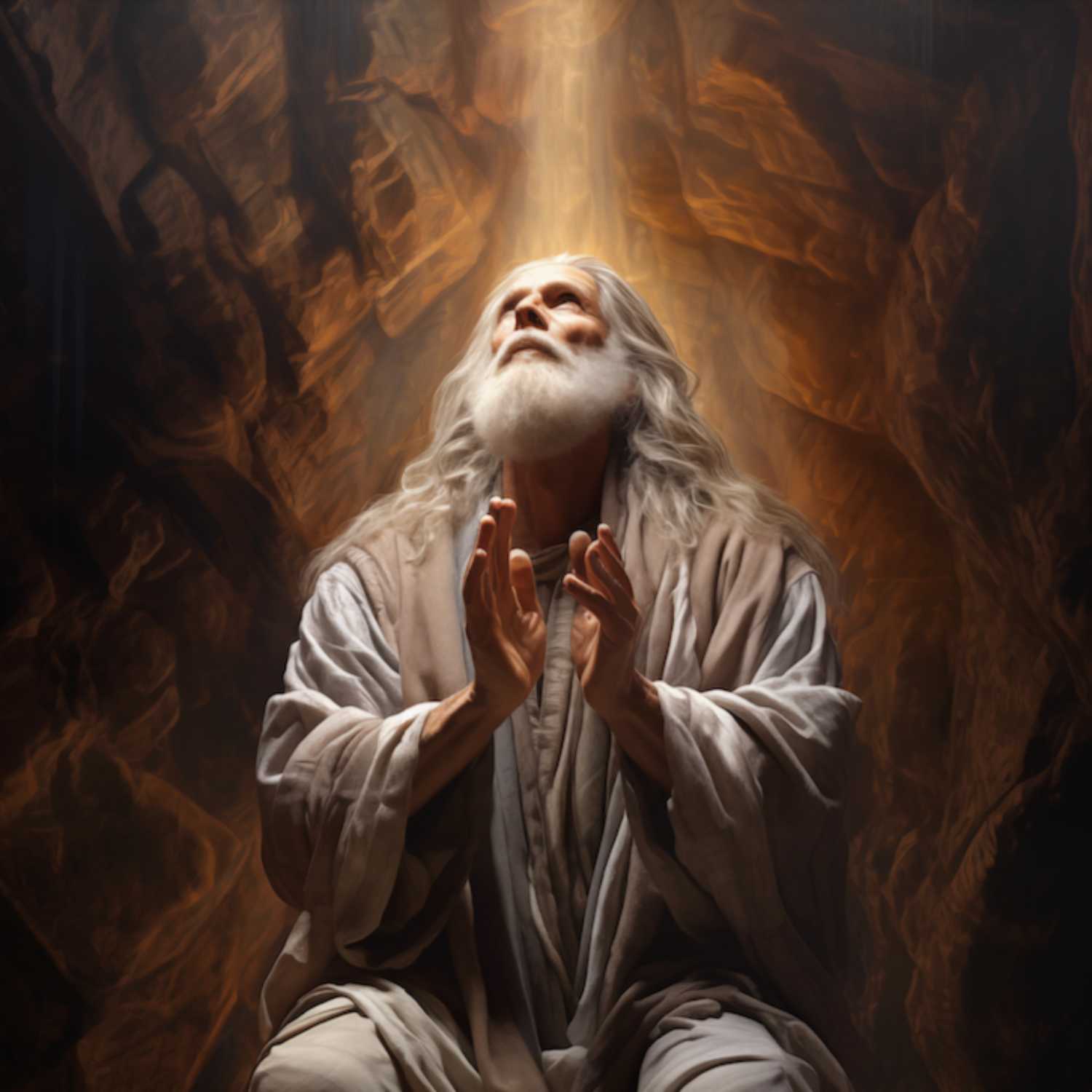
§9: Rev 1:9-11:The First Woe and Start of the Second Woe
This podcast provides a verse-by-verse analysis of Revelation 1:9-11. After the introductory verses in the Book of Revelation, these verses begin the initial substantive visions. In these verses John identifies himself by name as a peer among his fellow-saints that suffer tribulation. The podcast explains the conditions of John’s day and his banishment to the island of Patmos for his witness and testimony of Jesus Christ. The podcast also explains what it means to be patient in a gospel-sense. John’s vision of Jesus Christ occurred on the “Lord’s Day,” which means Sunday. John was “in the Spirit” on that day as the vision was heralded by a symbolic trumpet. This podcast describes the process whereby Sabbath-day worship went from Saturday among the Jews to Sunday among Christians. The podcast concludes with the directive for John to write the vision on a scroll that was to be sent to the Seven Churches in Asia.Verse Time Stamps:Revelation 1:9: 0:03:51Revelation 1:10: 0:53:08Revelation 1:11: 1:24:35

§8 Rev 1:7-8: Introduction to the Second Coming of Jesus Christ
This podcast provides a detailed description and analysis of Revelation 1:7-8. These verses set forth John’s first introduction to the Second Coming of Jesus Christ when he shall come in the clouds and every eye shall see him, including those that pierced him at the time of his crucifixion. The discussion of each verse can be found at the following specific times in the podcast: Revelation 1:7, Start: 00:01:15 Revelation 1:8, Start: 00:58:45
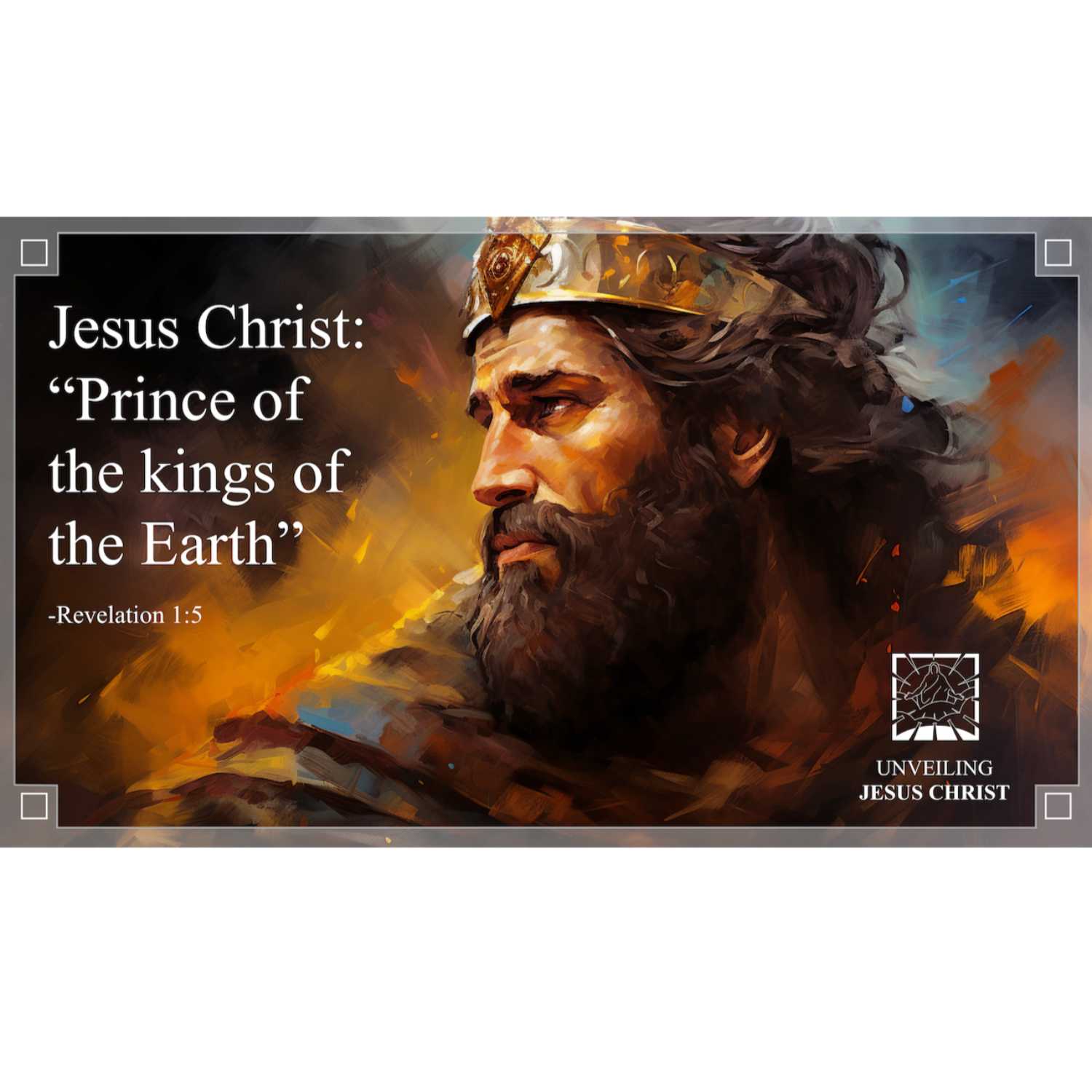
§7 Rev 1:4-6: John’s Salutation to the Seven Churches
This podcast describes the visions of John the Revelator in Revelation 1:4-6. These verses contain John’s salutation to the seven churches in Asia Minor. The name-title of Christ “which is, which was, and which is to come” is explained. The Seven Spirits are interpreted as the seven servants or leaders of the seven churches. This podcast further explains what it means for Jesus, “the faithful witness” to be the “first begotten of the dead and the prince of the kings of the earth,” and how his atonement washed or loosed us from sin. Revelation 1:6 describes “God and his Father” which refers to God the Father (our Heavenly Father) who also has an exalted Father. The discussion of this verse includes a description of how creation is multi-generational and one generation is patterned after every other generation. We are literal children of a Heavenly Father and Heavenly Mother in this generation of their spirit offspring. This podcast concludes with a discussion of the two-fold doxology or worship of Christ included in Revelation 1:6. The discussion of each verse can be found at the following times in this podcast: Revelation 1:4 starts at 0:01:34Revelation 1:5 starts at 0:26:45Revelation 1:6 starts at 0:49:34
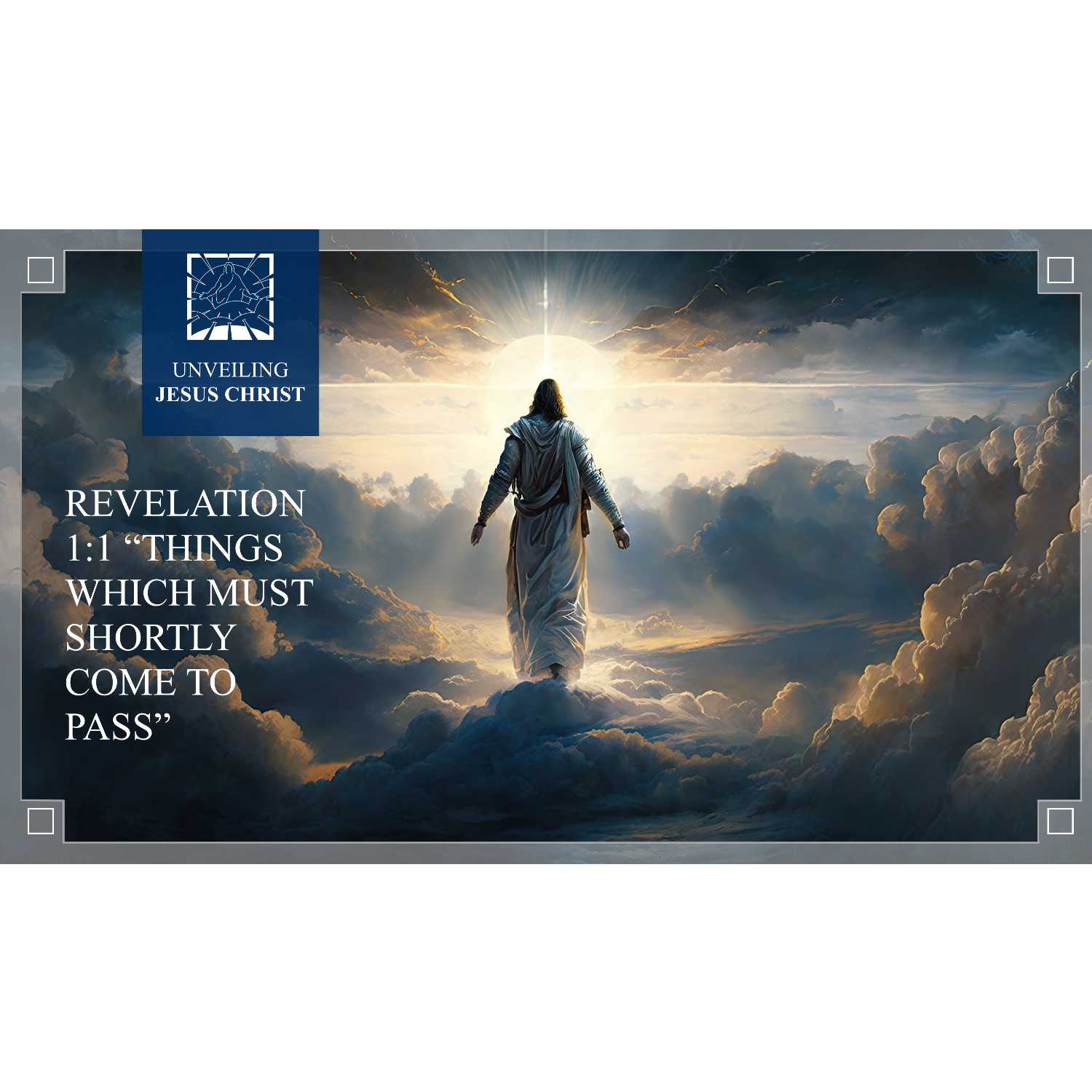
§6: Rev 1:1-3: John Announces the Revelation of Jesus Christ
This podcast provides a detailed description and analysis of Revelation 1:1-3. These three verses set forth the title and subject matter of the entire book which is the unveiling of Jesus Christ. The Revelation comes from God through Jesus Christ to his servant John and all faithful people who are also considered servants. The podcast explains the meaning of things which must shortly come to pass, the signification of the Revelation by an angel, the angels who appear throughout the Revelation, the testimony of Jesus Christ that John bare of all things he saw, John’s witness to the world of all things he saw, the duties of all people to read, hear, understand and keep the sayings of the prophecy, and the urgency to do so because “the time is at hand.” The discussion of each verse can be found at the following specific times in the podcast: Revelation 1:1, Start: 0:8:00 Revelation 1:2, Start: 0:47:30 Revelation 1:3, Start: 1:08:31
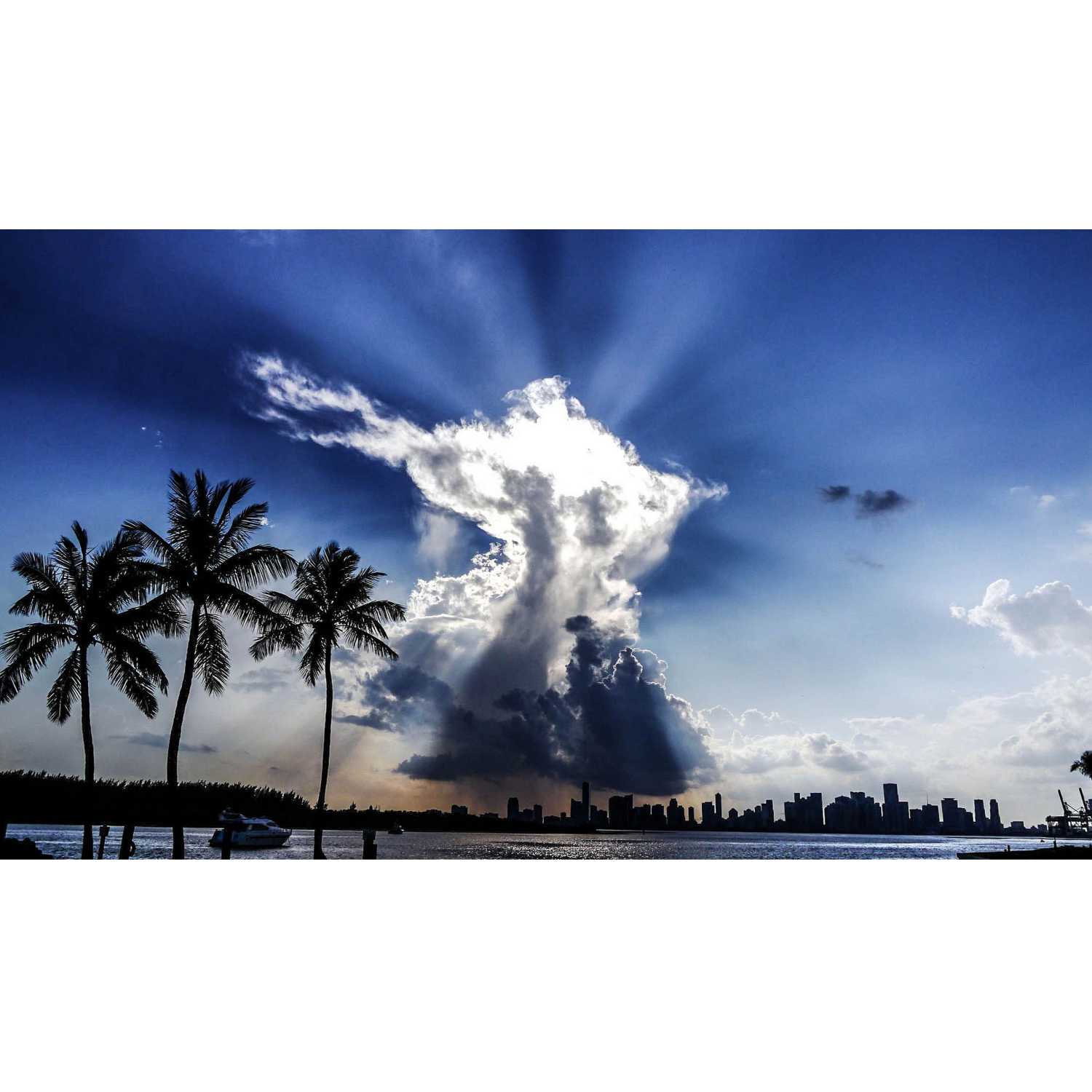
CFM014: Revelation 20 - 22 (CFM Study: Dec 25 - 31)
This podcast covers the last three chapters in the Book of Revelation and the final podcast in the Come, Follow Me series. The podcast includes a discussion about the millennium, the first resurrection during the millennium, as well as successive stages of the resurrection after the millennium. There is a discussion of the timing and battle of the Great God (Gog and Magog) during the little season, as well as the final judgment of the sons of perdition after the little season. The death and resurrection of the earth is discussed, followed by a symbolic description of the celestialized earth. The latter discussion describes the two celestial cities of New Jerusalem and Old Jerusalem, which will be separate capital cities on the celestial earth. The epilogue of the Book of Revelation found in Revelation 22 is the final subject of discussion in this podcast.
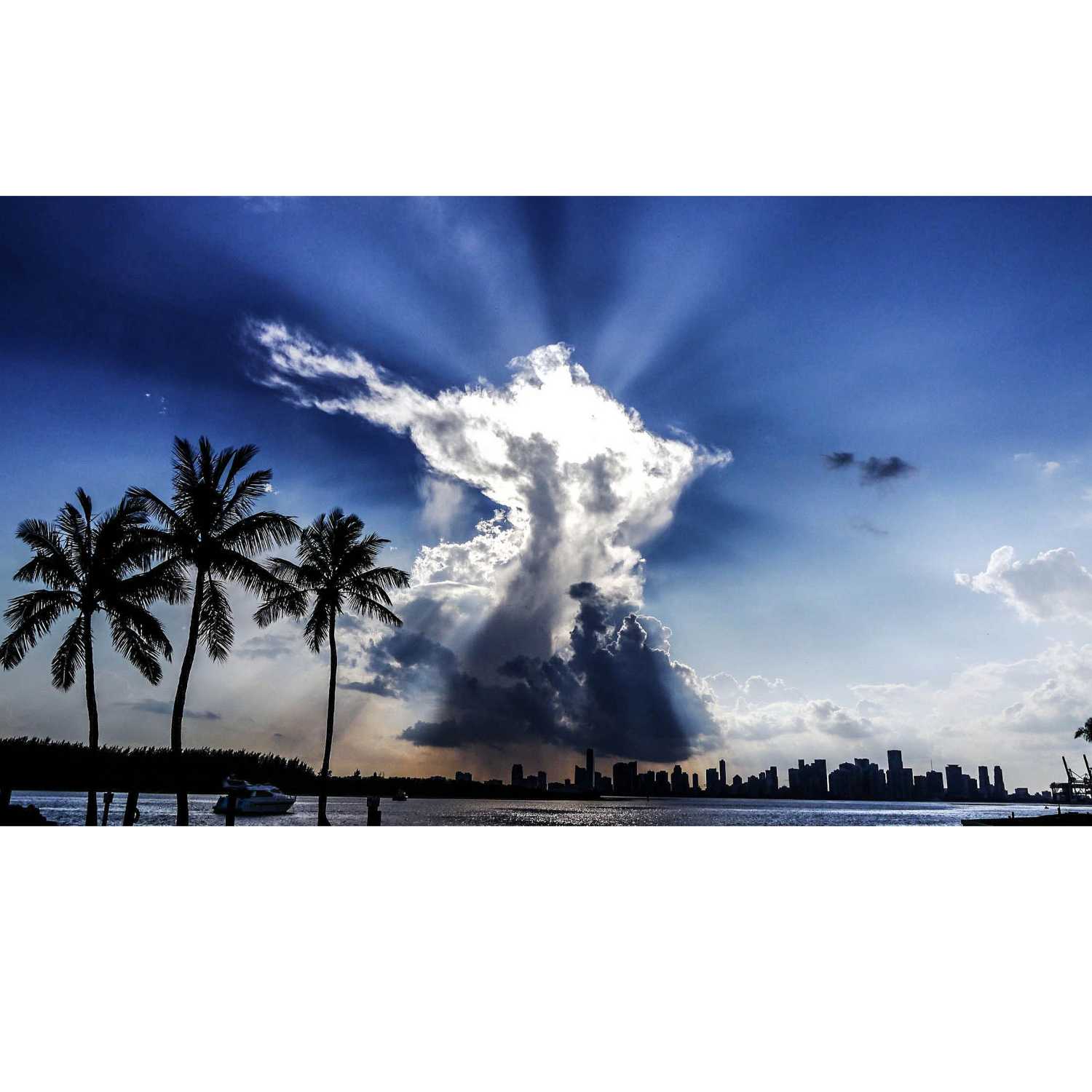
CFM013: Revelation 15 - 19 (CFM Study: NA)
This podcast explains the revelations and visions of the apostle John in Revelation, chapters 15-19. This includes the Come, Follow Me curriculum for these chapters. These chapters and this discussion includes the following topics: The Grand Sign in Heaven just before the Second Coming of Jesus Christ; a discussion of the Third Woe and the Seven Vial Plages that are part of the Third Woe; physical and spiritual Armageddon, the defeat of all unembodied and disembodied sons of perdition at the Second Coming; the history and modern presence of the great whore of false religion in Revelation 17; the spiritual and physical fall of Modern Babylon in Revelation 18; the marriage supper of the Lamb in Revelation 19; and all other plagues and judgments associated with the Second Coming of Jesus Christ.
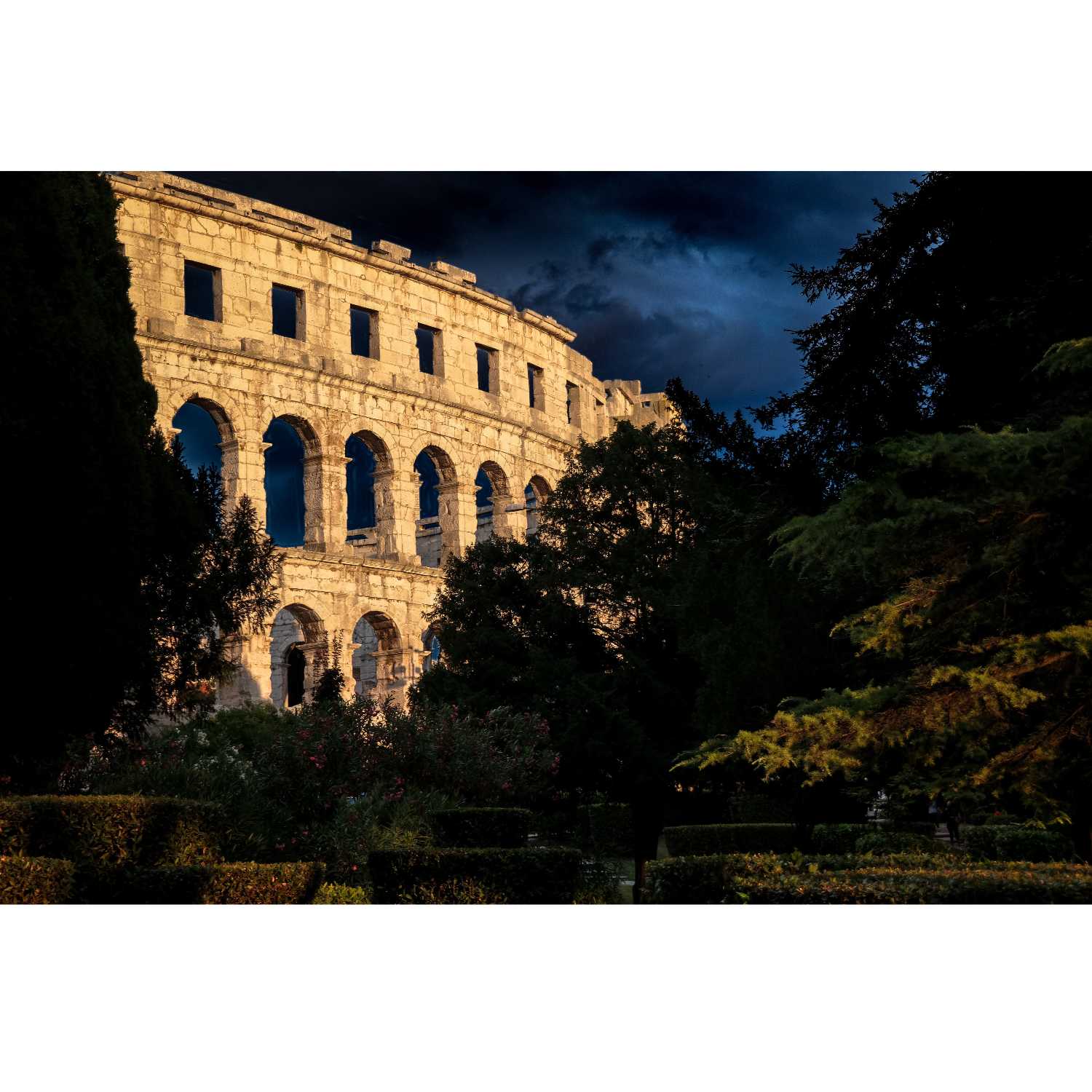
CFM012: Revelation 12 - 14 (CFM Study: Dec 18 - 24)
This podcast corresponds to the Come, Follow Me course of study for the week of December 17-23, 2023. The flashback chapters in Revelation 12-14 are discussed in this podcast. The discussion covers the grand council in heaven on the spirit world called Kolob, the rebellion of Lucifer at that grand council, the premortal apostasy, the war in heaven, the growth of the ancient earthly church in the wilderness of the Roman Empire during the apostolic period, Satan’s war on the ancient church of Jesus Christ from 35-70 AD, the kingdom of Satan in the Roman Empire and beyond from 70 AD to the Second Coming in Revelation 13, including a discussion of the First Beast and Second Beast in Revelation 13, the 144,000 that will stand with Christ on mount Zion at the Second Coming, and the seven angels of Revelation 14, including the four “Harvest Angels” that reap exaltation-worthy saints and sons of perdition as the Second Woe comes to an end.

CFM011: Revelation 6 - 11 (CFM Study: Dec 11 - 17)
This podcast explains the content of Revelation 6-11 as the second Come, Follow Me lesson in the Book of Revelation. It includes a discussion of the seven seals, and the great earthquake that will occur at the end of the sixth seal. The podcast provides an overview of Revelation 7, as an integral part of the events of the sixth seal. There is also a discussion and explanation of the half-hour of silence as the seventh seal is opened in Revelation 8, followed by the trumpet plagues. The discussion continues with a description of the First Woe as a time of spiritual darkness followed by the Second Woe which coincides with the physical battle of Armageddon, including the destruction of all mortal sons of perdition as a group. The discussion of Revelation 10 includes information about the future gathering of saints at Adam-ondi-Ahman and John’s “little book” mission among the Lost Ten Tribes of Israel. The podcast concludes with a discussion of Revelation 11 that describes the ministry of the Two Witnesses in Jerusalem and John’s introduction to the Third Woe just before the Second Coming.
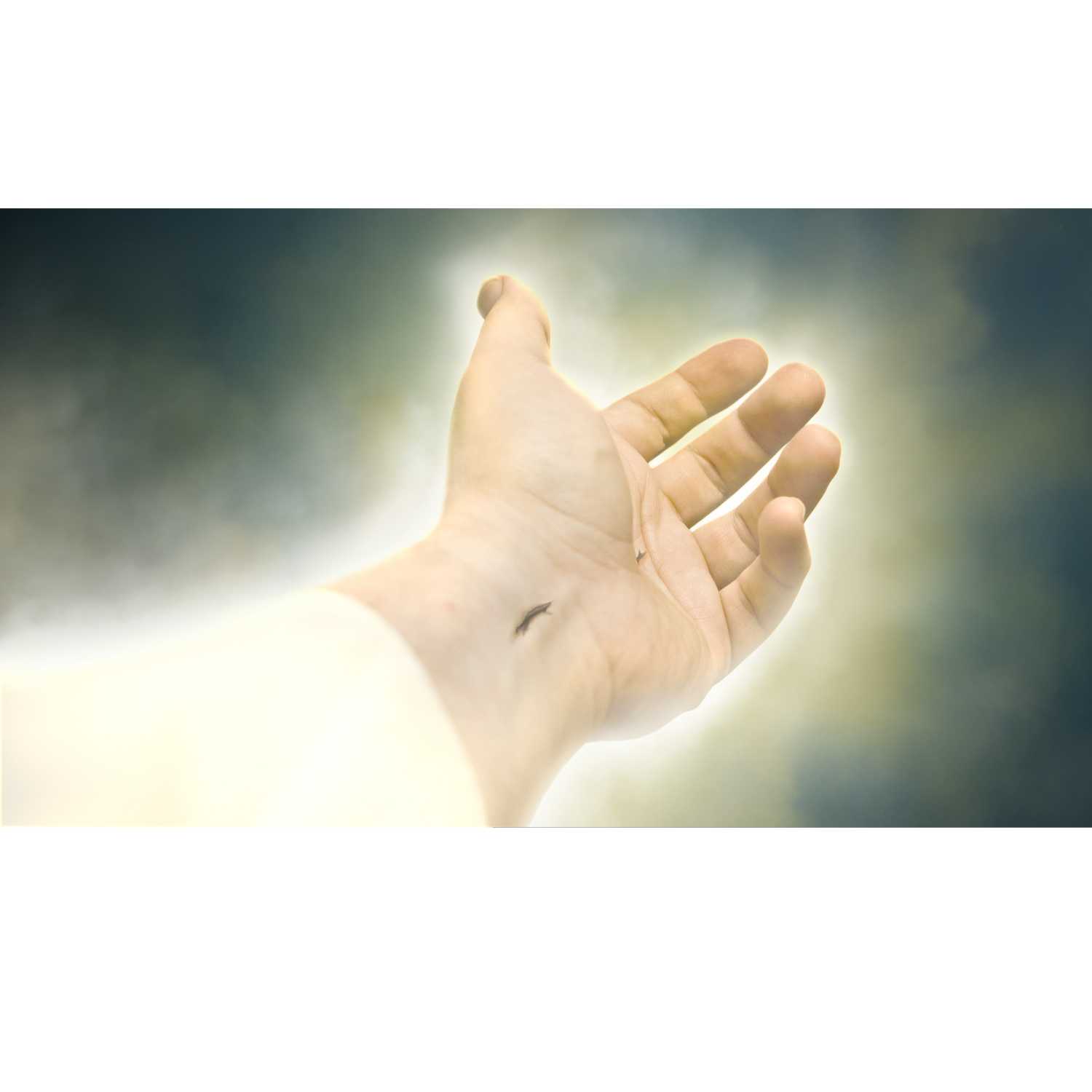
CFM010: Revelation 1 - 5 (CFM Study: Dec 4 - 10)
This podcast provided an overview of the content in the first five chapters in the Book of Revelation. This podcast corresponds to the Come, Follow Me curriculum for December 4-10, 2023. The general topics include John’s vision of Jesus Christ in Revelation 1; an overview of the saints in the seven cities of Asia in Revelation 2 and 3; the context and timing of John’s vision of heaven (celestial paradise) in Revelation 4 and 5.
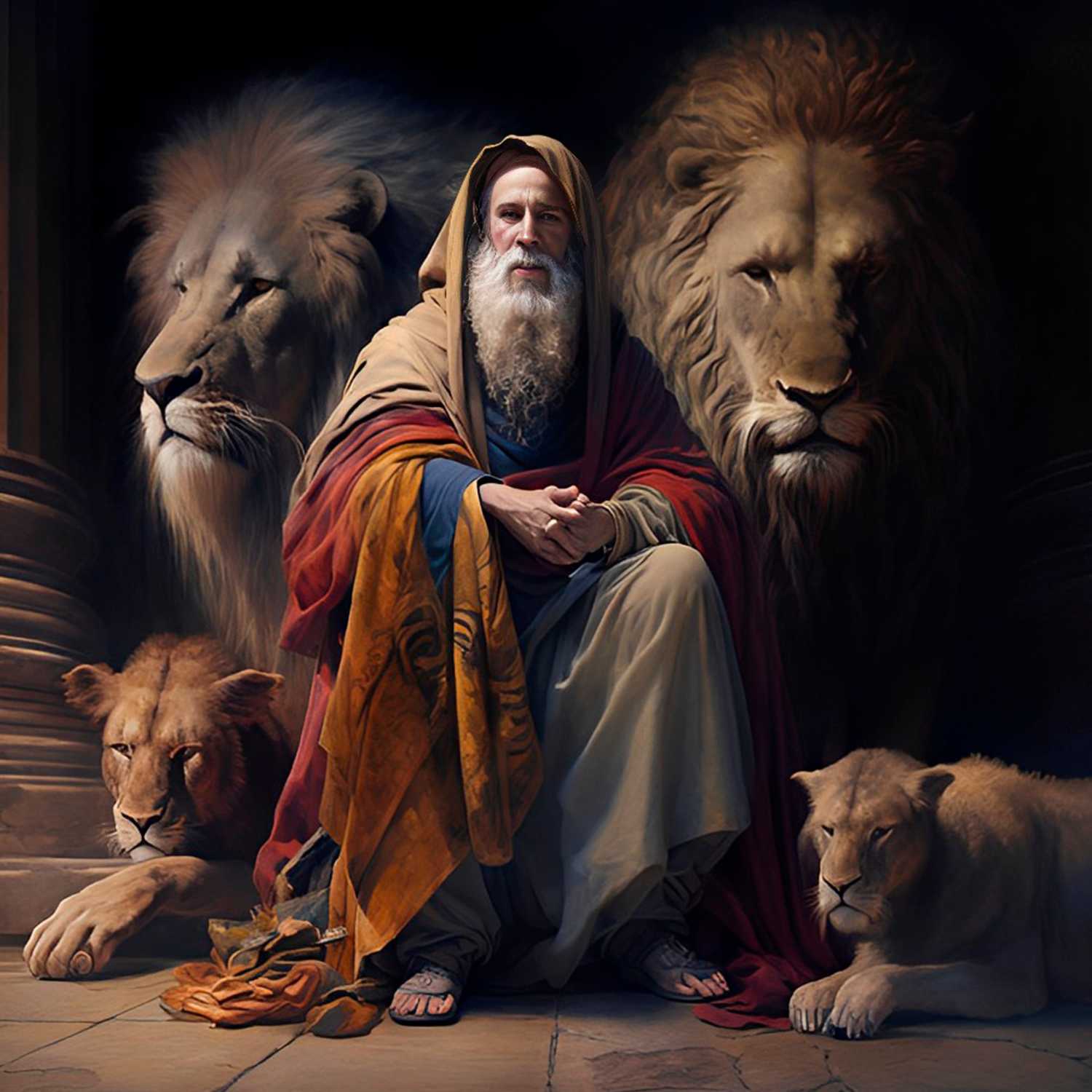
CFM009: Daniel’s Seventy Weeks Prophecy
This podcast explains the Seventy Weeks Prophecy of Daniel found in Daniel 9:24-27. Daniel’s prophecy predicted the timing of the crucifixion of Jesus Christ almost 600 years before it occurred. That same prophecy describes the timeline for Christ’s Second Coming and events that are to occur between the time of the crucifixion and the Second Coming. This podcast also describes the correlation between Daniel’s Seventy Weeks Prophecy and John the Revelator’s visions in the Book of Revelation.
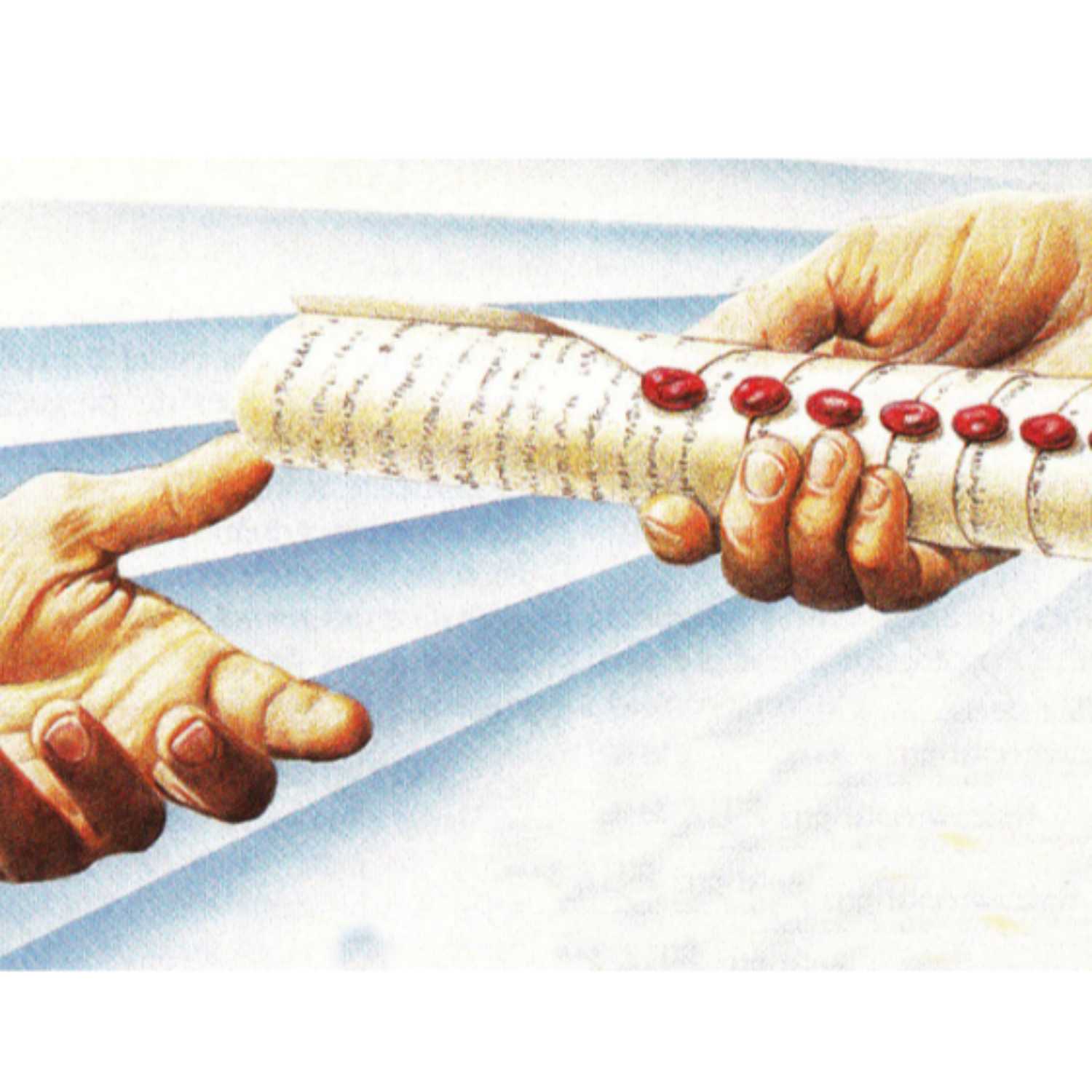
CFM008: Book With Seven Seals
This podcast gives an overview of the symbolism and imagery used by John the Revelator to describe the book with seven seals in chapter 5 of the Book of Revelation.
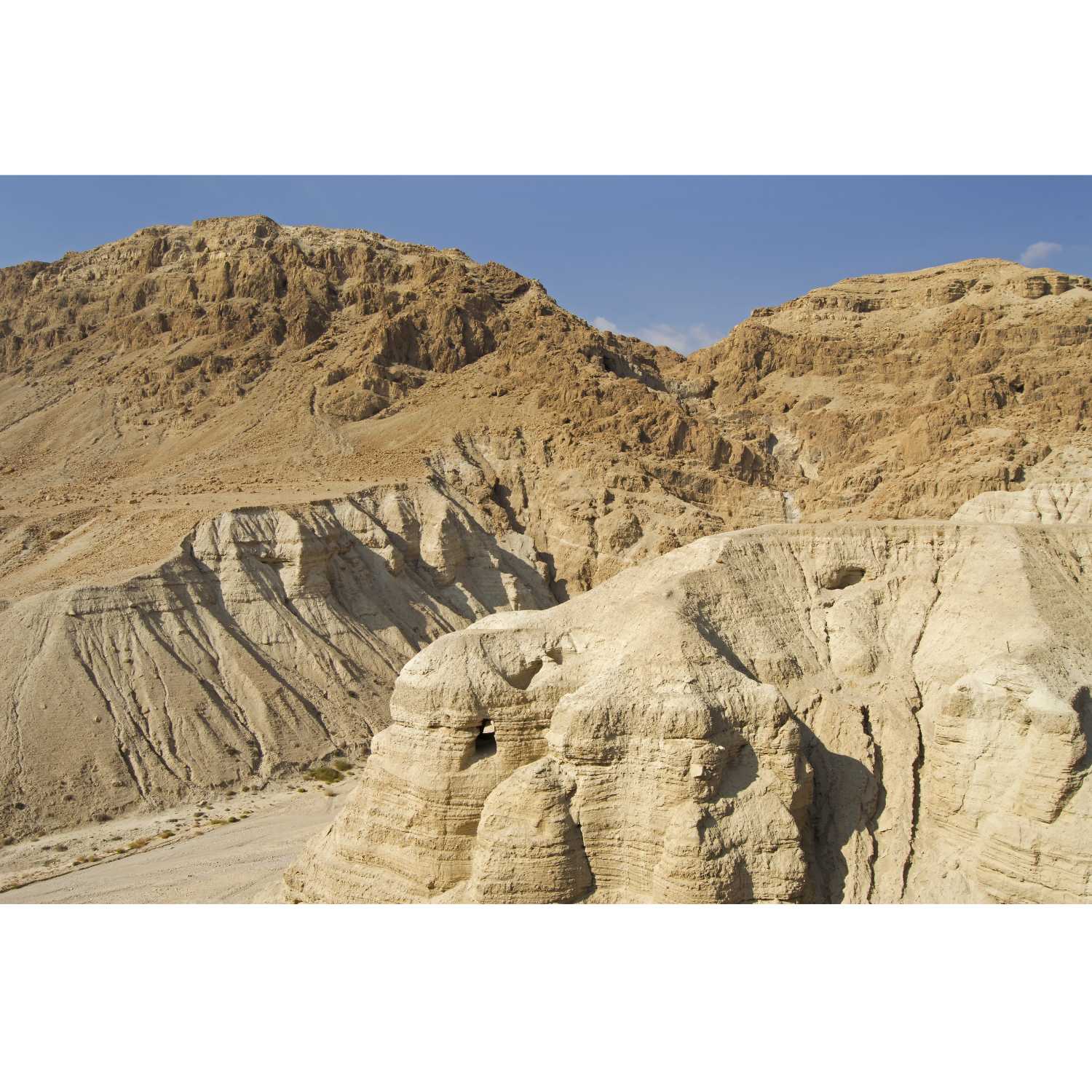
CFM007: Seven Churches - Part 2
This podcast is the second of a two-part series that describes the seven cities of Asia Minor from the Book of Revelation. The focus in this part is limited to the history, events and attributes of the last six cities of Smyrna, Pergamos, Thyatira, Philadelphia, Sardis, and Laodicea from Revelation 2 and 3. This overview of the seven cities generally does not include a discussion of the seven churches themselves.

CFM006: Seven Churches in the Book of Revelation - Part 1
This podcast is an introduction and overview of the seven letters that John the Revelator wrote to the seven churches in Asia Minor in 96 AD. Following the overview of all seven letters and churches, this podcast discusses the history of Ephesus as the capital city for the province of Ionia, as a commercial center, and as a religious center that included the temple of Diana. The podcast also includes the song, “In the Hollow of Thy Hand” by Judith Kapp Perry and a personal story about sister Perry.

CFM005: The Book of Revelation Numerology and Symbols
This podcast describes the numerology used by John the Revelator in the Book of Revelation. Numerology is the study of the symbolism of numbers that communicate concepts, ideas and truths. The podcast explains, and gives many examples of, the historical use of the numbers 3, 3½, 4, 6, 7, 8, 10, and 12 in both religious and secular contexts. Hidden truths in the Book of Revelation will be unveiled as the symbolic meaning of these numbers are understood.
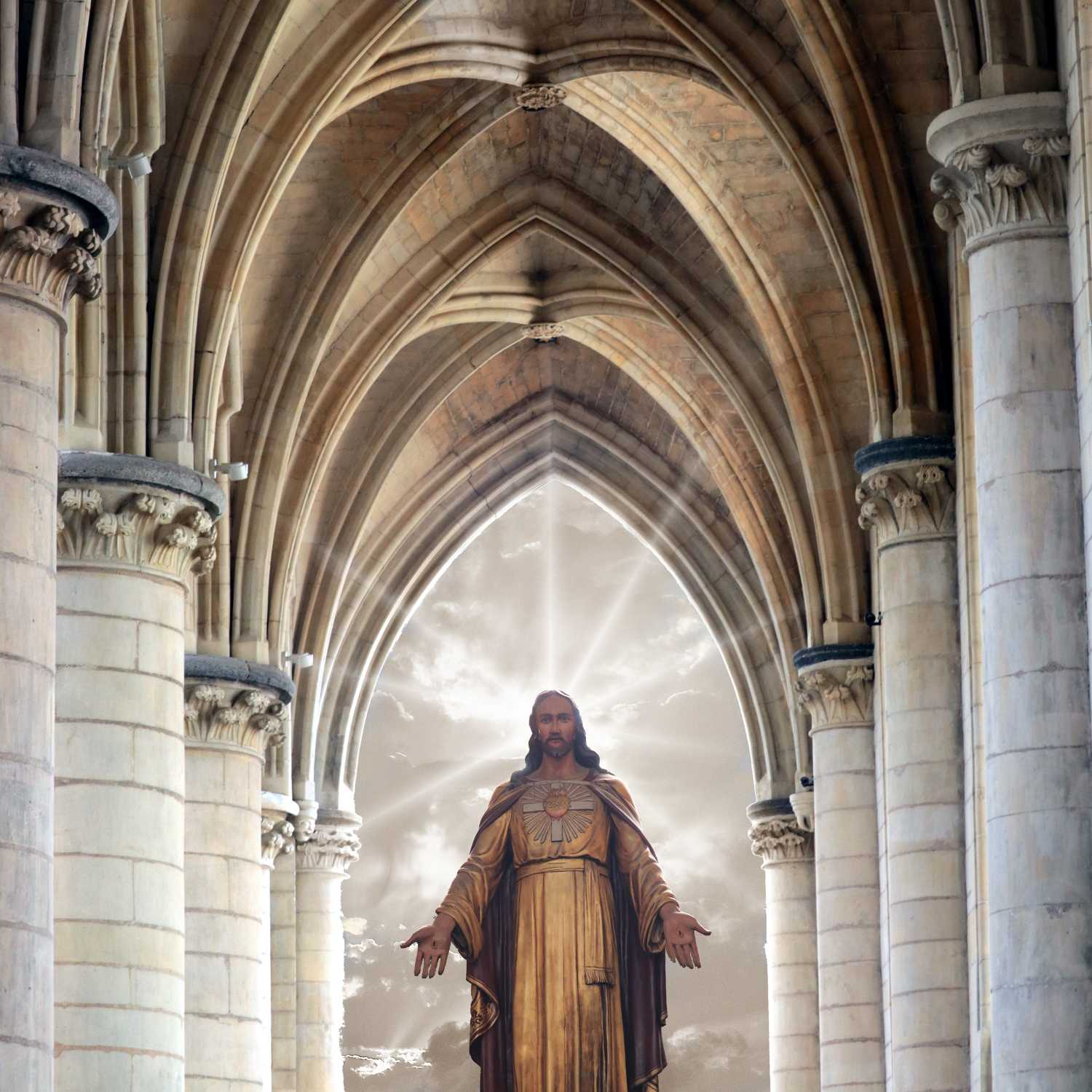
CFM004: The Book of Revelation Organization and Structure
This podcast discusses the structure of the Book of Revelation in the context of the Israel-Hamas War that began on October 7, 2023. The podcast includes a historical summary of conflict and warfare in Palestine since the end of World War I to provide a greater perspective for this latest war that some people are calling “Armageddon.” Based on the chronological structure used by John the Revelator in the Book of Revelation it’s clear that the current Israel-Hamas war is not the start of Armageddon. The current war is, however, a foreshadow of worse tings to come when the world is finally engulfed in the battle of Armageddon.

CFM003: Unveiling Jesus Christ: The Book of Revelation Made Plain
In this world of rapid-fire events and living conditions, it’s hard to find the time to study the scriptures in general. The problem is even worse for the Book of Revelation that requires more time and diligent study due to its complex symbols and images. This podcast explains how you can use your time most effectively to better understand the words of John the Revelator until you too can say that it is “one of the plainest books that God ever caused to be written.” (Joseph Smith, TPJS, 290)

CFM002: The Date and Canonization of the Revelation
This podcast describes the canonization of the Bible, and the miracle that occurred when the Book of Revelation was included in the Bible canon during the council at Carthage in 397 AD. This podcast also explores the date on which John received his visions while banished on the island of Patmos, how the contents miraculously got off the island, how they miraculously circulated in the Roman Empire, and how they miraculously survived intact into the modern era.
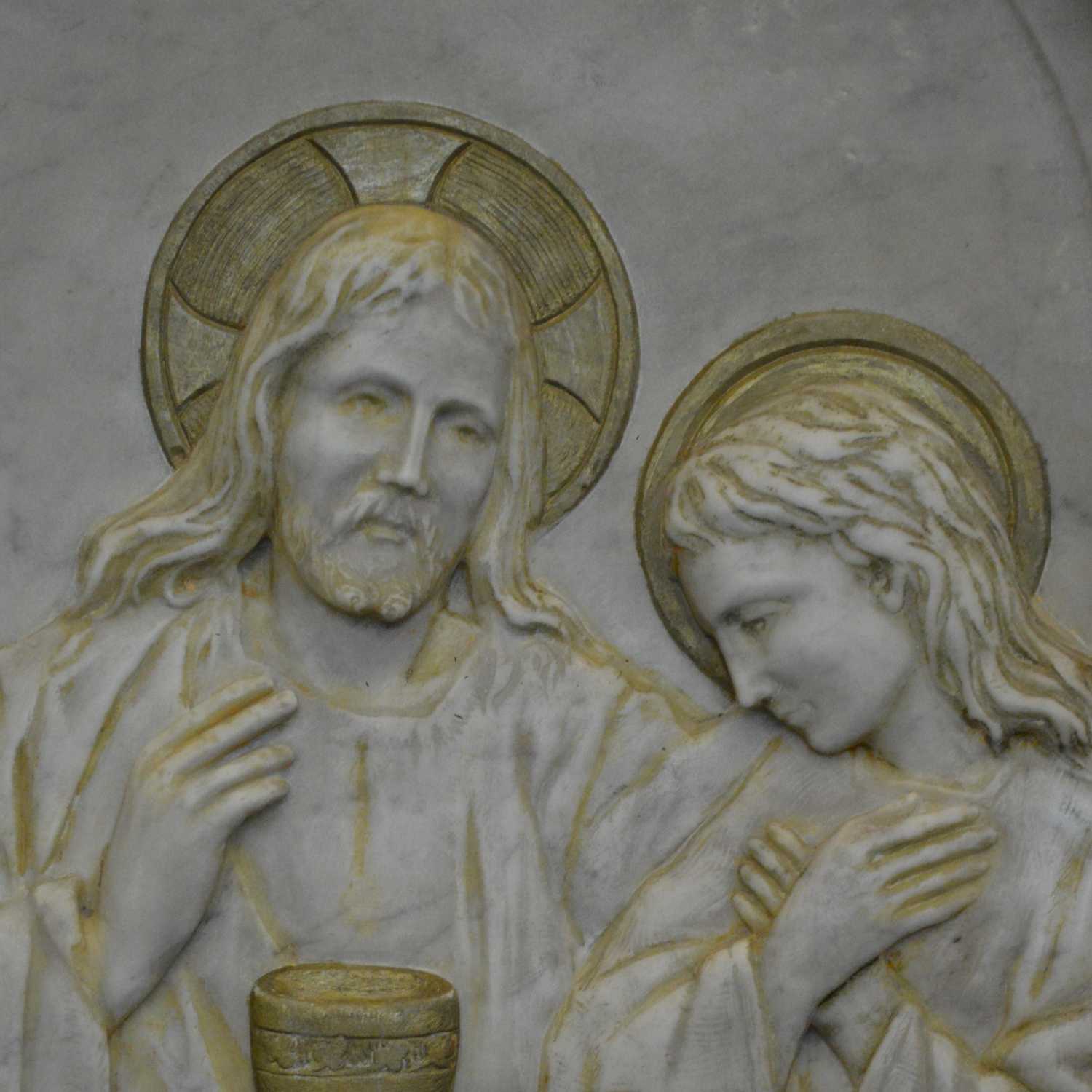
CFM001: John the Revelator – “He’s the Guy”
This podcast by John E. Cassinat describes in detail the person of Saint John the Divine—also known as John the Revelator—who wrote the Book of Revelation as the last book of the New Testament. Topics include John’s premortal foreordination to be the Revelator; his names and personal attributes; his familial and personal relationship with Jesus Christ; and their shared experiences until Christ’s crucifixion.